|
CMC has been invited to present at the International Motorcycle Road Safety Conference in Zaragoza, Spain.
ANESDOR (Spanish Motorcycle Industry Federation) and the Spanish Ministry of Transport (DGT) organized the conference. Not only technicians, researchers and international organisations shared experiences, also politicians, and traffic planners from various regions, including South America and Asia, presented their contributions to increase motorcycle safety. CMC showed a connectivity experimental vehicle (Yamaha TMAX base) and a standardized motorcycle target used for testing the performance of ADAS systems on cars. In addition, various production motorcycles and scooters with safety technologies were displayed. The audience was very interested in CMC activities and progress. In particular, CMC’s wide research activities and the combination of connectivity and ADAS functionalty was appreciated. Find out more at the conference’s web link: https://motorcycleroadsafety.com/ where also the video live stream is available. Moving into 2024, the Connected Motorcycle Consortium has entered its third phase nicknamed ‘CMC 3.0’. The focus for the coming three years will be on further research on both accident scenarios and simulation. In addition, standardization and cooperation with other consortia and governments is going to continue.
Looking back on last year, some very interesting studies have been completed and published by CMC:
Rider Reaction Time studies CMC has conducted two significant studies using dynamic motorcycle riding simulators to explore rider reaction times to various warning types. These studies offer valuable insights for enhancing rider safety and designing more effective future C-ITS applications. Study setup Both studies compared reactions in urban and rural settings. These did not include imminent crash warnings, but advisory warnings with 3 seconds between warning onset and the potentially critical situation becoming visible. RRT I (End of 2022) focused on generic visual warnings on the dashboard. Findings indicate that for about one out of six instances, riders failed to notice the warnings. When warnings were noticed, it took riders about 1 second to look towards the dashboard and about 2 to 2.5 seconds to react physically by reducing throttle or initiating braking. Responses were quicker in urban settings, which were deemed more critical by the riders. RRT II (End of 2023) expanded the research to include 4 more variations regarding the type of warning signals:
Key Outcomes
‘For the first time in the history of the motorcycle industry, so many organizations came together to pursue one common goal – “Together for rider Safety”!’, Mr. Christof Lischka, current CMC President and Head of Development at BMW Motorrad, stressed the fact, that the motorcycle industry works actively together with car makers to improve safety of motorcycle riders. Connectivity Systems (V2X) between motorcycles and other vehicles, most likely cars, as well as Advanced Driver Assistance Systems (ADAS), are key technologies which will increase rider safety significantly in the coming decade. Hennes Fischer, spokesperson of CMC and Senior Adviser at Yamaha Motor Europe, explains: ‘We see V2X connectivity as an additional sensor for ADAS systems. The combination of both technologies is promising and we expect contribution of these technologies to make riding safer.’ CMC demo event to showcase it all CMC was initiated in 2015 and was proud to show the results of its years-long research culminating in a Demo event at the modern facilities of the Dekra Technology Center, at the Lausitzring near Dresden, Germany on 14th and 15th September 2023. Visitors were updated about how frequent accident scenarios between cars and motorcycles could be avoided by means of Connectivity Systems and ADAS. Systems of multiple OEMs working together Next to the world leading motorcycle makers BMW, Honda, Ducati, KTM, Suzuki and Yamaha, also prominent carmakers, such as BMW, Honda, Lamborghini and Volkswagen participated in the event. Close to 80 guests had a chance to experience the systems live in one of the cars. In general, they were impressed to see the actual workings of these systems, and also by the fact that systems of such a diverse mix of brands, could work flawlessly together. Audience Attendees came from all over Europe and beyond. Members from the press, associations, authorities, safety organizations, suppliers and other stakeholders composed a varied and diverse interest group. Visitors could talk to the management and people behind CMC. Results of research studies were presented in-depth. Information stands allowed for interaction and encouraged open discussions about the various topics. Connectivity and ADAS use cases shown The images below indicate which use cases were demonstrated at the event. Research studies presented The following 4 topics were addressed in special presentations: Accident research CMC engages accident research in order to prioritize the most impactful use cases and applications. Earlier accident studies from Germany were now complemented with those for the whole of Europe and led to a fine-tuning of priorities. Studies will be continued with U.S. and Japan in the future. Rider Reaction Time This topic is very important to understand: how much time is there before a situation becomes critical or not? How should a rider be warned, and what influences that such warning is actually observed and responded to? CMC initiated the first studies specifically dedicated to motorcycle riders and the results showed remarkable differences between warning types. Application Simulation Scientific simulation programs can simulate use cases; by creating variations in values, hundreds of different simulations can be created for a single use case and add a deeper understanding for the flexibility of the situation. Motorcycle rider protection through ADAS BMW presented the ADAS system that is already being equipped in cars and how effective it can be regarding collision avoidance. The importance of Automated Emergency Braking was highlighted. Step by step towards solutions
All in all, CMC demonstrated how both Connectivity systems and ADAS play an important role in enhancing motorcycle safety; on the one hand, by providing warnings in time to react; on the other hand, by automated collision avoidance on the very last moment. The Demo Event proved highly productive and successful, significantly advancing the knowledge base and internal collaboration within the C-ITS community. Video and press kit materials can be found in the downloads section of the CMC website. In this post we will explore how the second generation of motorcycle applications are ready and meet real world testing after a period of simulation studies. We will explain about those studies and see how Japanese and European engineers of several key motorcycle manufacturers gathered at the Carissma test track in Germany to scrutinise the current technical level of the applications, which are supposed to improve motorcycle safety, in real life. Finally, we will also dwell upon the handover of the CMC presidency from Mr. Nomura of Honda to Mr. Lischka of BMW Motorrad. Application development It has been a while since the prototypical development of several C-ITS applications in the first CMC generation between 2016 and 2020. The current team, consisting of representatives of all participating motorcycle OEMs, concentrated on the further development of the second generation Intersection Movement Assist (IMA) and Left Turn Assist (LTA). Both applications are now higher developed and more sophisticated and based on the latest ETSI standards. In addition, they can now cover a wide range of different scenarios.
Simulation The CMC experts first tested and validated the two further developed functions IMA and LTA virtually in a simulation environment and further improved the application with the knowledge gained. The open-source simulation software Car Learning to Act (Carla) is used for this purpose (see picture). “First, we developed suitable maps as part of the simulation environment for our motorcycle-specific use cases developed in CMC, which depict the respective scenarios”, says Mrs. Chouta, research assistant at CARISSMA, Technische Hochschule Ingolstadt, Germany. Large number of simulation scenarios In addition, the two applications were tested in the simulation environment and played out in large number of different scenarios. Mrs. Li, Bertrandt Group, responsible for the implementation of the simulations, says: “Thanks to the virtual simulation, we were able to test the further developed applications perfectly and, as soon as we identified a need for improvement, we were able to work on this and to test them again in the next development loop. This has helped us to cover many different scenarios. The use of virtual and digital methods paired with an agile way of working in an international team of experts enables us to be optimally prepared for the first hardware testing." First testing in real-life scenarios In April 2023, the test engineers from all OEMs involved in CMC met at the Carissma test site at Ingolstadt University of Technology. Here, for the first time, the further developed and virtually tested applications were added to the revised and updated vehicle prototypes. After completing the communication test and successful commissioning, the Crossing and Left Turn use cases were tested in a real scenario. Firstly, the findings from the simulation could be confirmed. The applications were working as expected and as simulated. e.g. the notifications were operating/non-operating as they were intended to be. Secondly, individual parameters were further optimized, such as the timing of notifications.To optimize the timing of notifications, it is necessary to test with real humans and consider their perception, acceptance, and behavior, which cannot be replicated in simulation. Last but not least, an important observation is that the newly developed applications were all functioning correctly in real-life scenarios when implemented in vehicles. Next level testing with car manufacturers So now, CMC is ready for a next level of testing. The entire testing team of CMC is already looking forward to the upcoming test event in June 2023 at the Dekra Technologies Center Lausitzring, where testing will be continued and expanded with advanced driving assistant systems together with car manufacturers. CMC Next Presidency
Mr. Nomura, former Managing Officer, Chief Officer, Motorcycle & Power Products Operations, Honda, represented CMC as president until the end of 2022. In 2023, Mr. Lischka, Head of Development BMW Motorrad, took over the CMC presidency. Mr. Nomura and Mr. Lischka together underline the importance of the CMC test events in 2023 together with car manufacturers and other partners in the vehicle safety community. Mr. Lischka was already able to get an idea of the developed C-ITS applications in motorcycle-relevant use cases on the test site at the Ingolstadt University of Technology. “I am pleased with the progress that the CMC OEM team has made across the board. In particular, all topics relating to the information and warning concept were very easy to experience and have proven to be a good basis for further development. As CMC, we will define the next steps together with car manufacturers in the upcoming test events and also explore the potential contribution of driver assistance systems in cars to enhance motorcycle safety. The tests will allow us to experience this actively firsthand. I would like to thank everyone involved for their collective efforts to improve motorcycle safety!” As a new addition to the ‘Basic Specification 1.0” set of documents, CMC has published use case scenario specifications derived from accident analysis. The use cases describe some of the most common accident scenarios that result in PTW rider injuries: “Crossing” and “Left Turn”. The document describes such important use cases, taking PTW-specific characteristics into consideration, for Advanced Driver Assistance Systems (ADAS) based on on-board sensor systems such as camera or radar, and Cooperative Intelligent Transport Systems (C-ITS) technologies. Significant characteristics of PTWs are a basically smaller size and different driving dynamics compared to other types of vehicles. This may end up in a variety of dangerous situations: • Hidden behind another participant or object • Delay of detection by other road users such as car drivers • Hidden in the blind spot • Speed and distance being easily misjudged • Filtering through narrow space. In such cases, a warning (or active intervention) could have important safety benefits. Time-To-Collision The basic criterion to decide whether a conflict situation is arising or not, is the Time-To-Collision (TTC). TTC defines what time is left before the conflict emerges. For the TTC calculation a path prediction is used assuming constant speed and trajectory for each participant at every point in time. If these paths cross and would lead to a collision, a TTC can be calculated. “Crossing Traffic” scenario The crossing traffic accident types according to the German In-Depth Accident Study (GIDAS) database describe a conflict between a road user (Participant A) who is obligated to wait and a road user (Participant B) entitled to the right of way. This scenario may occur at junctions and crossings of roads, field or cycle paths, railway crossings as well as property exits or parking lots. Ideally, Participant A should receive an advisory notification about the oncoming Participant B. In 62% of the analysed cases, a TTC calculation earlier than TTC = 2.6 s is possible and gives Participant A time to decelerate and let Participant B pass. If Participant A would start accelerating anyway, an active intervention combined with an earliest possible warning would mitigate the situation. “Left Turn” scenario The left turn scenario is described by two or more road users in an oncoming traffic situation, with one of the participants intending to turn left. The one trying to turn may misjudge the speed and distance of or does not even recognise the one coming straight at all. The left-turning vehicle as main accident causer will be addressed. According to the GIDAS database the median differential speed between the two vehicles involved is 92 km/h. Furthermore, in 50% of all analysed cases, a TTC calculation was not possible earlier than TTC = 1.5 sec. Given these boundary conditions, an active intervention would have the highest expected safety benefit, followed by a warning with the aim of increasing driver/ rider situation awareness and stop turning. Providing an advisory notification will likely not prevent the accident due to the limited time resulting from the accident configuration. For more info please visit our web page about Use case specification here.
A first empirical study regarding PTW rider reaction times towards a visual warning has been published by CMC. The results are remarkable: In comparison to driver reaction times in passenger car studies, more missed warnings were observed, reaction times seem longer and reaction time distributions seem wider. Background C-ITS systems that warn the motorcycle rider of an upcoming danger only work if the rider is interpreting the warning correctly and reacts accordingly. So far however, there is little knowledge about how long a rider reaction towards a warning takes. What has been investigated The whitepaper describes a dynamic motorcycle riding simulator study by CMC, which investigated motorcycle riders’ reaction times towards a warning on the dashboard. The dashboard warning was a generic visual warning which can act as a benchmark to improve upon in the future. Reactions in an urban and a rural scenario were tested. These did not include imminent crash warnings, but advisory warnings with 3 seconds between warning onset and the potentially critical situation becoming visible. Usability
The results of this study can be used in the following ways: 1.To better estimate for which C-ITS scenarios, running on a PTW, a purely visual warning could be appropriate, and for which ones not. 2. To act as a benchmark: Any OEM’s individual HMI warning solution should result in faster reaction times and less missed warnings in this test setup than the ‘conservative’ rider notification assessed in this study. 3. To clarify to which extent results from passenger car research are applicable to the PTW domain and to serve as an input for rider behaviour models in simulations which are e.g., necessary to estimate the effectiveness of various (C-ITS) safety applications. The following interesting outcomes could be observed • In 16.7% of cases, the purely visual warning was not recognized at all. • Among the other cases, the average time between onset of the notification and gaze towards the dashboard was about 1 second already. • The average time between notification onset and ‘throttle off’ was about 2 seconds. • The average time between notification onset and ‘initiate braking’ was about 2.5 seconds. • The mentioned reaction times were shorter in the urban scenario compared to the rural one, where the situation was perceived as less critical. Favourable evaluation among participants Another interesting observation could be that, in the more time-critical urban scenario, all riders who had seen the warning, initiated braking before the obstacle became visible. In combination with the favourable evaluation of the test riders after the experiment, this shows a good potential for the safety benefit of C-ITS applications. The whitepaper is available for download here Powered Two Wheelers (PTWs) are often not seen by other road users, or their speed and distance are misjudged. "Sorry mate, I did not see you" is a typical reaction in case of accidents. Advanced Driver Assistance Systems (ADAS) support passenger car drivers to avoid hazardous situations in many traffic scenarios and have a high potential to decrease the number of collision accidents with motorcycles. These systems have strongly evolved in recent years, and as drivers become more comfortable with ADAS, they tend to rely more and more on this technology and become less attentive to the driving task. But do these systems warn properly in case of PTWs nearby? Driven by this thesis and concerned by the potential perception failure of PTWs, the Connected Motorcycle Consortium conducted an in-depth study on PTW Conspicuity. Importance of PTW conspicuity
Motorcyclists are considered as Vulnerable Road Users (VRU) by the EU. They require extra attention by other road users, to be seen and recognised. In case of passenger car ADAS, reliable detection of PTWs is essential to avoid car-PTW collision accidents and to reduce the number of motorcyclist fatalities. In recent years there has been a continuous decrease in fatal car accidents in Europe. This has various reasons: not only changing regulations concerning speed limitations, obligations for safety equipment and improving vehicle technologies, but also the support of ADAS could avoid severe accidents. However, since motorcyclists are fast-moving targets and provide a small reflective surface for radar sensors, it can be more difficult for passenger car ADAS to detect them. The Connected Motorcycle Consortium decided to investigate the role and efficiency of ADAS in detecting motorcycles and avoiding accidents. Whitepaper In the whitepaper "PTW Conspicuity", an investigation into the status-quo of the detection of PTWs by passenger car ADAS is presented. In addition, various methods to improve the conspicuity of PTWs are evaluated. The focus is on the analysis of current research, regulations, academic papers, technical reports, and other studies that have already dealt with the conspicuity of PTWs. The outcomes show that the detection of PTWs is quite a challenge for these systems indeed. The whitepaper can be accessed here. The general aim of the Connected Motorcycle Consortium (CMC) is to make Powered Two-Wheelers (PTW) part of the future connected mobility. To achieve that, CMC is not solely focusing on technical aspects of this process, but ensures the early integration of the rider. What is a suitable warning timing? For instance, any assistance system that does not intervene automatically requires a reliable communication from the PTW to the rider (i.e., any kind of warning) to ensure that he or she can take appropriate action. Currently, there is no universal and reliable PTW-rider specific information regarding a suitable warning timing, because we lack knowledge about riders’ detection and processing capabilities of a warning while riding. Furthermore, these capabilities may be influenced by a lot of different factors, such as vehicle ergonomics, rider workload etc. Yet, the decision on warning design and timing is vital to ensure a safety benefit of the application, to reduce the number of perceived false positive alarms and increase acceptance of the application among riders. Study by means of an advanced riding simulator To address this important aspect, CMC investigates PTW rider-specific reaction times towards warnings in a user study on a riding simulator. This DESMORI dynamic motorcycle riding simulator at WIVW is equipped with a mockup mounted on a 6 degrees of freedom hydraulic platform for vestibular feedback. The mockup enables the rider to interact with fully realistic controls, such as usual handlebar, brake lever/ pedal, clutch, gear selector, etc. Helmet-integrated headphones or shakers attached to the individual helmets are used for auditory feedback. The rider steers the motorcycle through a combination of steering torque (with torque feedback up to 80 Nm) and induced roll torque by shifting his/ her weight. The cylindrical screen enables 220° horizontal field of view. The instrument cluster – same as the mirrors – is a TFT screen which permits to flexibly provide various types of visual warnings. Emperical results This test environment allows to analyze rider behavior in scenarios, which were previously identified by CMC’s Feature Team Accidentology, in a safe and controlled environment with the major aim to provide empirical evidence for warning design, warning timing and the creation of rider behavior models that serve as input for the safety applications. Concretely: In order to design those applications, you would need to know how long it takes before a rider realises that there is a warning. For example, if noticing the warning already takes one second, and then the rider needs another second before actually taking avoiding action, the warning needs to be issued by the application already two seconds before the minimum required ‘technical’ time & distance needed to avoid the collission – a very critical path to make some applications work. With over 13000 visitors from the ITS* community, from industry experts to policy makers, the ITS World Congress is the largest of its kind. Focusing on future smart mobility and the digitalisation of transport, the event showcases the latest innovations and technologies regarding ITS. Apart from a large exhibition area, part of the event are live, interactive and thought-provoking sessions where industry experts present the latest developments. One of these sessions included a presentation from the Connected Motorcycle Consortium. Motorcycles – Why they fit in automated and connected traffic CMC explained how powered two wheelers are part of urban mobility and provided insights from the latest accident data analyses in Crossing Traffic and Left Turn scenarios. With the presentation, CMC had three goals in mind:
On top of that, the congress provided the opportunity to raise awareness that the motorcycle industry is working together and joining forces in order to enhance rider safety. The CMC Basic Specification and its set of documents were introduced, including the roadmap towards the future. https://www.cmc-info.net/basic-specification.html Time To Collision (TTC) The topic of ‘Time-to-collision’ was illustrated based on the two mentioned scenarios, where the Left Turn scenario proved much more of a challenge compared to the Crossing Traffic scenario, in terms of available reaction time. According to a study by Breuer et al.**, a reaction time of around 3 or more seconds is required, but especially with the Left Turn scenario it only allows few cases matching this criteria. The Crossing Traffic scenario, on the other hand, shows a majority of cases within this time and therefore a promising potential for avoiding accidents. Way forward CMC announced to further investigate motorcycle accidents and further identify the important scenarios. On top of that, a strengthened collaboration with industries / stake-holders (car, truck, infrastructure, etc.) will be key to achieve further progress in motorcycle safety. And finally, it will be important to develop ITS specifications which are suitable for motorcycles from an interoperability, affordability and mountability point of view. A copy of the presentation can be found in the downloads section of our website: https://www.cmc-info.net/downloads.html * ITS = Intelligent Transport Systems ** Source = J.Breuer, S Gleissner: Neue Systeme zur Vermeidung bzw. Folgenminderung von Auffahrunfällen | VDI-Berichte #1960, pg 397 | VDI Verlag Düsseldorf 2006 To understand how and why motorcycle accidents happen is the basis for accident prevention. As CMC points out, when motorcycles ‘talk’ to cars, a certain amount of collisions between cars and motorcycles may be avoided. In particular, road crossings are most critical places, where often a car driver oversees the oncoming motorcycle on the priority road. Database analysis for definition of test cases With the support of VUFO GmbH, CMC has analysed real, reconstructed accidents based on a simulation database (GIDAS-PCM). Out of these accidents a ‘prototype’ average scenario is used. On the one hand to better understand the accident sequence, on the other hand, to derive test scenarios based on real accident data in order to develop and test future functionalities, technologies and connected systems. One of the frequent cases of the scenario group "Crossing traffic" (so called accident type 302) was analysed. In this accident type, participant A (usually a car) wants to turn left and disregards his obligation to wait. Involved party B (usually a motorcycle) approaches from the left. Figure 1: Accident type 302 - Crossing traffic with motorcycle approach from the left; Overview of trajectories. Vehicle-to-Vehicle connectivity allows for more reaction time for the motorcycle rider Based on the GIDAS-PCM, the trajectories, as well as the manoeuvres of both participants with their speeds and decelerations has been analysed and evaluated in a time-dependent way. The average result for all investigated cases is illustrated in Figure 2 with the corresponding velocity profiles. The good news: V2V connectivity shows a potential to avoid such accidents. The car driver (Participant A) starts accelerating already at 2,4 seconds after he has stopped and checked whether he can continue his manoeuvre. At the same time, the motorcycle rider (Participant B) obviously did not realize the car started to move. Only at 0,4 seconds before impact, the rider starts to brake. In contrast, with a Vehicle-to-Vehicle communication, the motorcycle rider could have been informed well 2 seconds ahead of the possible impact to perform braking. At the same time, also the car driver will be alerted as soon as he starts accelerating and has time to stop his manoeuvre.
Input to further research
This example described the average situation, but in reality the time sequences have a certain spread which is also analysed by our researchers. Those accident research findings allow developing a test scenario, which can be used for system tests in the simulation and for real field tests. In addition, the evaluated accident data could determine system limits and to identify warning times for riders/drivers. CMC will investigate further relevant accident types in order to provide even better support for riders/drivers in critical scenarios with systems in the future. CMC work shared by increasing number of members Several companies, universities and associations have decided to continue contribution to CMC ‘Next’. Ducati is now the seventh motorcycle manufacturer to support the consortium as Regular Member. Also academia and associations confirmed their continuous membership, such as ACEM, FIM, IKA University Aachen, Technische Hochschule Ingolstadt, Würzburg Institute for Traffic Sciences GmbH and VUFO GmbH. New: Computer simulation of motorcycle accidents The first work projects for 2021 have been started. VUFO GmbH is currently scrutinizing the most frequent accident scenarios. Intersection collisions are the predominant scenario, where usually the car driver does not see or perceive the oncoming motorcycle. So these key scenarios are investigated more deeply now. The GIDAS database provides the basis for the study. Among the databases on accidents that are available worldwide, this German database is one of the most detailed ones available. Not only does it include the basic items like the scenario, impact, speed, etcetera, but there are also descriptions to understand the situation, which are acquired through interviews. "As basis for our application definitions this is very useful.” says Masaru Mamiya (Suzuki), Leader of the Accidentology Expert Team. “Of course, we know this is based on German accidents only and we will have to check differences with other countries or regions too.” These detailed reconstructed accidents are analysed with a special software to better understand their dynamic, trajectory, speed, etc. in detail. With this methodology we could generate use cases for a testing environment. In a later step it is planned to make different variations to answer several important questions. For example: what would have happened if participants braked earlier? Can we compare different trajectories of the same accident? The purpose of this is to find common denominators in these different scenarios and simulation that can help our technical teams to consider possible solutions. These solutions may include the sender (motorcycle) side, for example by means of improved positioning accuracy or path prediction; and also the receiver (usually car) side, for example by improved warning strategies. Difference between car and motorcycle scenarios
“We need to understand in detail what is going on during collisions. Speeds, trajectories, vehicle movements and so on, will help us to define better requirements for safety applications”, says Yasuhiro Okada (Honda), Leader of the Applications Requirement Expert Team. CMC is often asked where the ‘technical’ difference lies between accidents where motorcycles are involved compared to accidents between cars only. Therefore particular attention is paid to the difference of motorcycle collisions compared to car-only collisions. For example, it may happen that the impact speed at accidents between cars and motorcycles is relatively high because the car driver had not seen the motorcycle and did not apply any braking at all. In that case, an application based on car-only accident studies may have less-than-ideal parameters to address accidents with motorcycles involved. CMC expects the first results of the computer analysis by the middle of this year. Then our expert teams will follow up with their work on technical solutions in order to improve applications that may help to avoid accidents. BMW Motorrad, Honda Motor Co. Ltd., KTM AG, and Yamaha Motor Co., Ltd. signed an agreement in December 2020 to continue cooperation from 2021 onwards to further enhance motorcycle safety and assure that motorcycles maintain their role in future mobility. Suzuki Motor Corporation and Triumph Design Ltd. expressed their intention to support the common activity in CMC ‘Next’. The approach is widened and the work will include investigating conspicuity of motorcycles by Advanced Driver Assistance Systems (ADAS). This ‘system’ approach looks at creating synergies between on-board sensor systems and connectivity. CMC members consider safety as a goal for the industry and are in favour of a strategy on improving motorcycle rider’s safety. CMC Basic Specification as milestone Since its establishment in 2016, CMC has worked on a Basic Specification for motorcycle specific V2X* connectivity systems. CMC has launched this ‘CMC-Basic Specification’ on December 11th, 2020. The Basic Specification is a first step to describe the function of motorcycle V2X systems. In a further step beyond 2020, the participating manufacturers will define further essential functional requirements to standardise in detail. CMC Basic Specification is further explained and documents are available for download on the CMC website. The website is also recently updated with various videos that contain examples of important scenarios, to showcase the advantages of connectivity between vehicles. https://www.cmc-info.net/safety.html CMC 'Next' increases cooperation with car & other vehicle industries
A further crucial step for CMC ‘Next’ after 2020 is the cooperation with the car industry and other vehicle manufacturers since motorcycles shall communicate in a standardised way. Modern cars are increasingly equipped with on-board sensor systems (radar, camera, etc.) and driver assistance systems. These vehicle systems need to include motorcycle requirements in order to enhance their safety effects in case of mixed traffic with motorcycles. CMC believes that tailored motorcycle/car scenarios and tests need to be developed and standardised. The new organisation has started its activity in January 2021. The six motorcycle manufacturers encourage other motorcycle manufacturers, suppliers, car manufacturers and other related organisations to join the cooperation to further pursue the deployment of new elements for motorcycle safety. *V2X in terms of wireless communication technology stands for ‘Vehicle-to- Everything’, including ‘Vehicle-to-Vehicle’ and ‘Vehicle-to-Infrastructure’. *The term ‘motorcycle’ in this text covers all types of Powered Two Wheelers (PTW). From the European Commisson "We really want to make a difference". Claire Depré, Head of Unit, Sustainable & Intelligent Transport, DG Mobility and Transport, European Commission, states: "I am really grateful to CMC for the work carried out, for bringing much more innovation and contributing to the safety of the overall transport system.” Have a look at the 5-minute video where she emphasizes the Commission's strategy towards the future, including 'Green Deal' and 'Vision Zero' and the importance of Vehicle-to-Vehicle communication therein; as well as the appreciation for the motorcycle industry to be involved in this. From the CMC president "A great stepping stone". Yoshishige Nomura, president of CMC in 2020, reminds that CMC is now composed of more than 20 organisations including OEMs, suppliers and research institutes and that the Basic Specification for motorcycles was made by the joint work of all members. He speaks out his appreciation for the cooperation that was received from all other stakeholders including the car industry. He also talks about the expectations for the future; Have a look at his 3-minute video. Founded in 2016, CMC aims at joining forces between motorcycle manufacturers, suppliers, research institutes and associations, to make motorcycles part of the future connected mobility. Until then, C-ITS (Cooperative Intelligent Transport System) specifications for passenger cars have not sufficiently taken motorcycle specific safety factors and challenges into consideration. An important goal therefore set out by CMC was to define a first Basic Specification for motorcycles to connect and ‘talk the same language’ to other vehicles or infrastructure by means of wireless communication. This is being achieved with the official publication of a set of documents to address various topics related to the introduction of C-ITS for motorcycles. These documents are now available for download on the CMC website. Importance of connectivity for motorcycle safety C-ITS allows road vehicles to communicate with each other, with roadside infrastructure and with other road users. C-ITS has a high potential, especially for motorcycles, to prevent accidents before they occur. Accident analysis shows that more than half of collisions with motorcycles are caused by the other vehicle driver. Not seeing the motorcycle coming, or misjudging distance and speed, are primary accident causes. A closer look at accidents with motorcycles reveal that 72% of the drivers’ failures are because the vehicle driver did not see the motorcycle. This perception failure may be summarized in the statement often heard after such crashes: ‘Sorry, but I didn’t see the motorcycle at all’. CMC believes that such accidents could be mitigated by future technologies, which will enable motorcycles to ‘talk’ to cars and other vehicles. Drivers may be alerted in case critical situations in traffic are foreseen by vehicle connectivity systems. The integration of motorcycles in the C-ITS ecosystem will bring significant safety benefits. CMC has been working on applications in which connectivity would allow to warn drivers and riders of potentially dangerous situations. Towards the future: CMC 'NEXT'
Following a Memorandum of Understanding signed in April, BMW Motorrad, Honda Motor Co. Ltd., KTM AG, Yamaha Motor Co. Ltd, have signed an agreement beginning of December to continue their efforts on motorcycle safety and connectivity in a next step named CMC ‘NEXT’. The scope is wider and the motorcycle experts will be looking at further improvements of the specification while at the same time taking account of new functions supported by on-board sensors both in cars and in motorcycles. * The term ‘motorcycle’ in this text covers all types of Powered Two Wheelers (PTW). CMC have been working hard to achieve the goal being set out in 2016: To have a ‘Basic Specification’ for C-ITS systems for motorcycles ready for publication by the end of 2020. All for the sake of improving rider safety. In the time leading up to this, studies have been conducted, protoype bikes have been built and evaluated, and meetings have been held with various stakeholders. All of this culminated in a set of (currently still draft) documents that address various topics related to the introduction of C-ITS for motorcycles. Contents The main issues in the ‘CMC Basic Specification’ are the following. * Studies of motorcycle accidents and potential safety benefits of C-ITS were conducted and described in an “Assessment of C-ITS application potential”. * The C-ITS applications themselves are defined in “Application Specification” and “System Specification” documents. * CMC has also prepared prototype C-ITS vehicles and conducted evaluation tests to verify the system, applications and parameters of them. The test results are summarised in an “Evaluation Report”. * The CMC Basic Specification is strongly related to other C-ITS standards, such as the Basic System Profile defined by the CAR 2 CAR Communication Consortium. Therefore, a “CMC position towards other standards” document is created to describe the points that need to be adapted from the original standards in order to accommodate motorcycles. * Furthermore, CMC has developed a strategy for the implementation time-plan of the different C-ITS applications, related to the extent in which they contribute to the rider safety as well as their technical challenges. To this purpose, an “Application Roadmap” has been defined. * CMC also investigated on the topic of Human Machine Interface design and concludes that an alignment in HMI design will further enhance rider’s safety as described in the “HMI guideline”. CMC will continue these activities in order to further develop and enhance the CMC Basic Specification and to communicate with C-ITS stakeholders so that C-ITS technology for motorcycles can be widely accepted by the C-ITS community. Motorcycle manufacturers investigate further cooperation beyond 2020 On April 28th 2020, BMW Motorrad, Honda, KTM, Suzuki and Yamaha Motor signed a new Memorandum of Understanding to start discussion to continue their cooperation through 2020 and beyond. The goal is to further enhance rider safety by assuring that motorcycles and scooters maintain their role in future mobility scenarios and are considered an integral part of the connectivity between vehicles. The signatories encourage other car and motorcycle manufacturers, suppliers and related organizations to join the cooperation and to pursue further improvements in motorcycle safety. Background
Founded in 2016, CMC has aimed to integrate motorcycle-specific safety aspects into connectivity technology (C-ITS, Cooperative-Intelligent Transportation Systems), both on the hardware side as well as on the software side. Based on accidentology data, a roadmap towards the future was defined, which, in 2020, is expected to culminate in the deployment of a set of ‘Basic Specifications’ to achieve standardization between manufacturers. With this foundation laid, the path now lays open for the next phase in development, including more detailed specifications and more concrete application definitions and functional requirements. Furthermore, CMC sees the need for closer collaboration with the automotive industry, in order to assure the efficiency of automotive advanced driver assistance systems (ADAS) with respect to motorcycles as well. Statement from CMC President Mr. Yoshishige Nomura, (Operating Executive of Honda Motor Co. Ltd.), current President of CMC, says: “CMC has been working on creating common specifications and standards and sharing information with car manufacturers and related organizations to accelerate the development in motorcycle safety. We are planning to issue a set of Basic Specifications at the end of 2020. We have reached a mutual understanding that it is necessary to assure the presence of motorcycles in the future mobility society through connecting via C-ITS to as many cars and other vehicles as possible. Our aim is the further expansion of C-ITS together with car and other vehicle industries and we expect that the collaboration with car manufacturers and other related organizations will be accelerated through our initiative.“ Motocycle industry VIP's come together to discuss future automation The motorcycle industry may play an important role in the mobility of the future. Mr. Yoshige Nomura, Operating Officer Motorcycles from Honda Motor Co. Ltd. and new President of CMC highlighted the opportunities and the challenges of the industry in the annual CMC conference, where CMC member’s top management gathers every year. Philipp Habsburg, CTO of KTM AG who hosted the event at their recently opened ‘Motohall’ at Mattighofen, Austria believes that CMC has become a ‘brand’ in the automotive sector and a platform to challenge even a wider variety of future challenges. 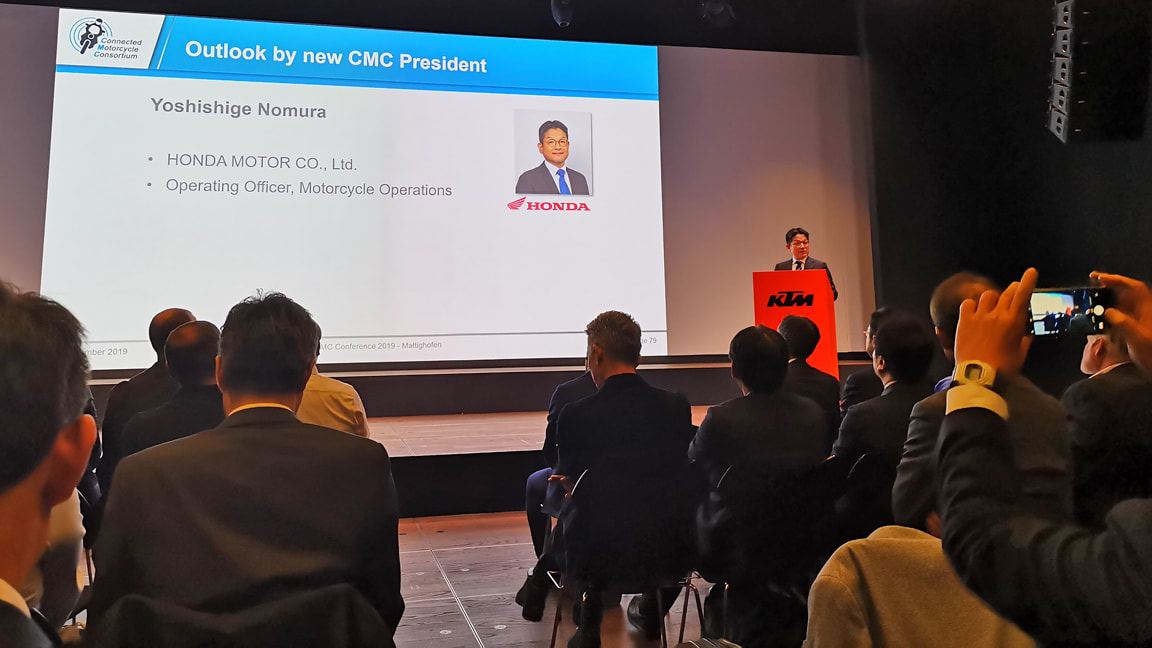 Speech by CMC president Mr. Nomura Speech by CMC president Mr. Nomura Demonstration in 2020 of working systems in action The goal of CMC to define a Basic Specification for Motorcycle ITS is on its way and the Consortium is planning a safety conference in 2020 to demonstrate the results of their work. CMC believes that connectivity is a major contribution to safety for motorcyclists. Since most accidents happen due to perception failure from other vehicle drivers, connected services will warn drivers and riders of critical situations. To foster deployment of motorcycle ITS systems, CMC proposes standards and a technical framework. Technical challenges Masaru Mamiya from Suzuki, who leads CMC’s Unification and Interoperability Group, sees need for motorcycle specific standards and specification, since motorcycles have a fundamentally different driving dynamics compared with cars. Keynote speaker Peter Meckel from Asfinag in Austria, representing the European C-Roads consortium promised that road operators will supply information to road users including motorcycle riders. The traditional information via radio, Apps or navigation systems is not enough to boost safety. Information should be in real time and only a hybrid approach using ad hoc short-range communication together with long range communication as a mix of traditional and new technologies will provide real steps forward for road safety. Today's sensor technology not ready for automated traffic Christof Lischka, Executive Vice President Development and Felix Deissinger Head of Motorcycle Safety, both from BMW Motorrad pointed out the challenges powered two wheelers will face when road traffic will increasingly be automated. Today’s onboard sensor systems for example, still are not fully capable to recognize motorcycles under certain situations. More future challenges ahead Takuya Kinoshita CEO of Yamaha Motorcycle Operations at Yamaha Motor Co. Ltd. in Japan and previous President of CMC believes that the industry needs to stretch out beyond its own borders and work with all mobility stakeholders to safeguard motorcycles into a new area of mobility. CMC needs to cooperate with other consortia such as Car2Car Communication Consortium or 5G Automotive Association to make sure requirements of Powered Two Wheelers are included in future standards. Over the summer CMC performed a comprehensive test of a number of important C-ITS safety applications for motorcycles at the Aldenhoven Testing Ground near Aachen/Germany. The purpose of the test was to evaluate possible accident scenarios between a motorcycle and a car and to check the system settings in order to best inform the driver and rider how to mitigate dangerous situations. Motorcycle approaching information is a key safety feature A typical situation that motorcyclists experience is when a car approaches from a side road on to the main road where the motorcyclist has priority. It can often happen that the car driver slows down but doesn’t completely stop his vehicle. In which case the motorcyclist is unsure, if the car driver has seen/recognised him and the question is whether the rider should brake, and possibly risk another dangerous situation for vehicles following him? To help avoid such critical situations, the motorcycle and car communicate to each other and the car driver receives an indication/warning message to watch out for the motorcycle on the priority road. In order to make this happen, cars and motorcycles have to exchange standardized messages, called CAM and DENM messages which includes comprehensive set of information about vehicle status, such as speed, direction and/or the braking situation. To enable this communication to take place, CMC specialists have programmed software and tested it in laboratories. Verification however needs to be done in ‘real world’ scenarios and the Aldenhoven testing ground provides perfect surroundings with a variety of road layouts to check the systems. Warning timing is crucial The precise time when actually to warn the vehicle users is a highly important factor. In other words, when has the motorcycle rider or car driver passed a critical threshold and when is it required to show the warning in both the motorcycle and the car? If warnings come too early, confidence and acceptance of the system will be undermined. If a warning comes too late, everyone can imagine the consequences! CMC tested several scenarios over a number of speeds to validate the assumptions made in the laboratory. Calibrations to the systems were done on the spot and setups were improved during the testing sessions. EEBL – brake light indication very useful The so called EEBL (Electronic Emergency Brake Light) application was also tested in Aldenhoven and proved being very useful. With this system, the motorcycle rider receives information on the dashboard when another vehicle is undergoing hard braking and this is particularly useful if there is no direct line of sight, for example if a truck is between the braking vehicle and the motorcycle. This way the rider can be warned earlier, to avoid rear end collisions. CMC added important fine tuning to the algorithms being developed and optimized the best suitable timing for the warning to be issued to the motorcycle rider. Communication in two ways Communication is a vital part of C-ITS. Motorcycles need to be able to ‘talk’ to other vehicles digitally. And also verbal communication plays a role: during the development of C-ITS, it is the people who need to talk and to coordinate what issues motorcycles and other vehicles should communicate about. Digital communication: Antenna is the key For cars, antenna performance criteria have already been discussed and developed since a long time. For motorcycles however, this is not so easy: due to their particular vehicle dynamics, size and layout, the antenna development poses quite a challenge. The Connected Motorcycle Consortium started to conduct tests in special measurement chambers and is also verifying the test results in real riding conditions on the road. Antenna placement The ideal position of a motorcycle antenna is a location on the front of the motorcycle. Most critical situations occur along the direction of riding and this is when ITS communication is needed to warn other vehicles of a motorcycle in critical range. However, due to leaning angle of motorcycles while cornering, the antenna performance decreases with amount of lean angle. The corridor of antenna transmission becomes narrower. This results in a weaker transmission of signals to each side of the motorcycle. Accident scenarios based on studies carried out by academia and CMC will determine the threshold of such decreasing performance. The requirements currently worked out by CMC experts will be included in the CMC Basic System, which will describe CMC standards for motorcycle ITS systems. The tests luckily showed, that the body of the rider him/herself has less influence in shielding antenna transmission than expected. Nevertheless, transmission of signals backwards still pose a challenge. Equipment such as luggage or side cases will influence antenna performance. And CMC is making studies how to ensure the motorcycle to transmit messages to avoid rear end collisions. Verbal communication: talking to people To be able to network with influencers like legislators, politics and automotive industry, and to make them aware of the current work in CMC, verbal communication is still important. Therefore CMC participates to key congresses around the world. The recently held International Transport Forum in Leipzig was a good opportunity to address the world’s leading decision makers, amongst them road and traffic administrations, NGO’s, the WHO, politicians and user organizations, including FIA & FIM.
CMC spokesman Hennes Fischer participated in a round table discussion organized by IMMA, the global association of motorcycle manufacturers, to provide insights about the specific issues on powered two wheelers. Next up is the 13th ITS European Congress in Eindhoven, the Netherlands, which will provide another possibility to explain challenges and opportunities of connected motorcycles to important stakeholders in the C-ITS world. On Wednesday 5th June, 13:00-14:00 hours, CMC will present a paper there: “CMC is paving the way for motorcycle connectivity”. For more information see the organizer webpage: https://2019.itsineurope.com/ This way, the C-ITS industry can take the peculiarities of motorcycles better into account when preparing for the future! Real-life tests conducted Motorcycles are usually less than 1 metre wide and their position within their lane is an important information to determine critical situations. In other words, it makes quite a difference if a rider keeps left or right in his lane. The Connected Motorcycle Consortium conducted several real-life tests both on public roads and in confined test environments at Technische Hochschule Ingolstadt (THI). These tests were done with today’s GNSS localisations systems* in order to verify performance of these systems and to deduct CMC requirements for future safety applications on motorcycles. * GNSS stands for Global Navigation Satellite System. Examples of such systems with global coverage are GPS from the U.S.A. and GLONASS from Russia. By 2020, BDS from China and Galileo from the E.U. should be operational as well. Setting up the test units Test outcomes As to be expected, currently used automotive satellite systems do not provide enough accuracy on lane specific positioning. Furthermore, it turned out that the calculation of the motorcycle trajectory under weak satellite signals – the so-called ‘dead reckoning’* - is more demanding compared to cars. * In navigation, “dead reckoning” is the process of calculating the current position by using a previously determined position, or fix, and advancing that position based upon known or estimated speeds over elapsed time and course. Parameters not usable as in case of cars While for cars, steering angle and differential speed of wheels are key information to calculate a trajectory, for motorcycles, both are not available and not really useful. The differential speed of a motorcycle’s front and rear wheel does not indicate any directional change. Moreover, motorcycles do not have steering angles, which would allow calculation of their trajectory, since motorcycles are steered by inertia. Leaning angle, speed and most important centre of gravity are key parameters. Particularly centre of gravity is very difficult to measure, since the rider and his positioning on the bike have a massive influence on it. Common standard needed
Raphael Riebl from THI is convinced: “We still have lots of work to do to solve the ‘dead reckoning’ issue for motorcycles. Furthermore, it is essential, that we do this together in CMC with all manufacturers involved. Only if we can decide on common standards and test methods, we can assure the same dependable level of accuracy in positioning of every motorcycle on the road.” He contemplates: “Moreover, it is understood that only then we can go ahead with actual safety critical applications. So as an important next step we have to define a motorcycle-specific test scenario which includes the requirements for dead reckoning."
To create the demonstration, CMC was assisted by a new supporter, the global IT service provider Luxoft which developed the demo software for the user interface on the show car.
The CMC demonstration was part of a special interest-area called the “Connected Motorcycle World” where also other organisations showed new and interesting technologies for motorcycles in the future. Hennes adds “When talking to people, an interesting thing that came out was the concern if the data would be stored, or who could see it. Clearly, data privacy is an important issue with this new technology so it will be important for us as manufacturers to take good care of that when developing these future systems.” For the first time, the Connected Motorcycle Consortium will demonstrate connectivity and safety applications for motorcycles at a consumer show. Thomas Bischof, coordinator in CMC says: “Together with other stakeholders in motorcycle connectivity, we will demonstrate safety applications designed for motorcycles. We’re looking forward to get the motorcycle riders opinion about these future technologies. In particular, the system that warns car drivers that motorcycles are nearby, might inspire the riders. As we know, the other vehicle driver not seeing the motorcycle causes a majority of motorcycle accidents. Our systems will warn the car driver, when a critical situation occurs!” The International motorcycle show Intermot takes place from 2nd to 7th October 2018 at the Koelnmesse in Cologne, Germany. The CMC stand, which is called ‘Connected Motorcycle World’ will be located in Hall 6, Stand number A040/B047. CMC representatives will be available to visitors to demonstrate the connectivity applications on a motorcycle. Also, presentations are foreseen during the show, where more background information about the consortium and the technology will be given.
The Connected Motorcycle Consortium (CMC) and the European Association of Motorcycle Manufacturers (ACEM) will participate in the 2018 edition of the OECD International Transport Forum that will take place between 23 and 25 May in Leipzig, Germany.
The theme of the Forum will be “Transport Safety and Security” and it will address a wide range of issues including: connected vehicles, planning and design of safety transport systems, road infrastructure and safety management and the link between economic activity and road safety trends. Motorcycle safety experts from the CMC and ACEM* will be present at the 2018 International Transport Forum to elaborate on some of the different initiatives led by the industry to improve motorcycle safety in Europe, CMC experts will discuss with attendees the potential of connected intelligent transport systems (C-ITS) to improve motorcycle safety, the need for interoperable C-ITS applications as well as the risks and benefits of car automation for motorcyclists’ safety. Moreover, the Secretary General of the International Motorcycle Manufacturers’ Association will deliver a presentation on the situation of motorcycle safety at an international level. |
Archives
May 2024
|
COPYRIGHT 2024 Connected Motorcycle ConsortiumContact Us |
|




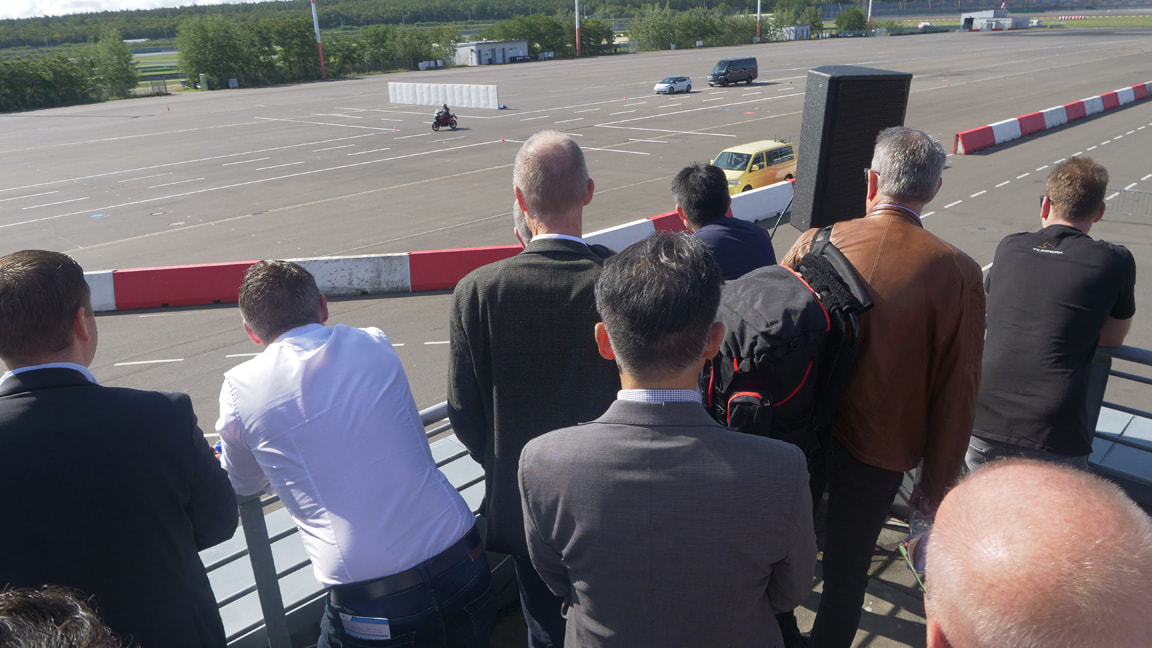
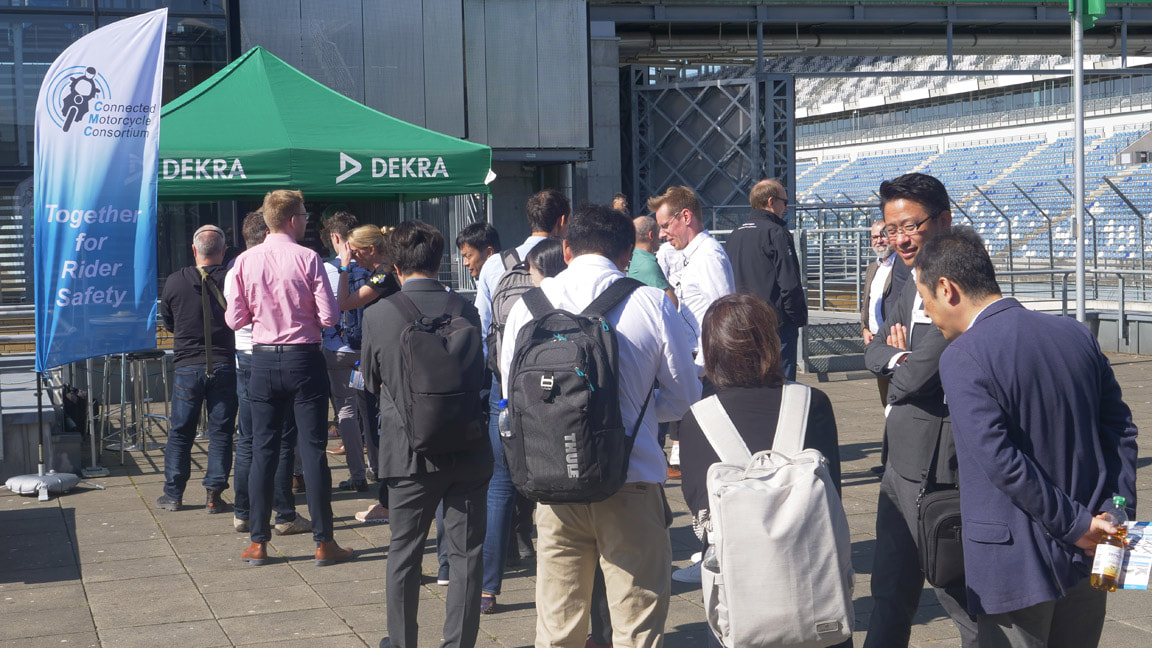
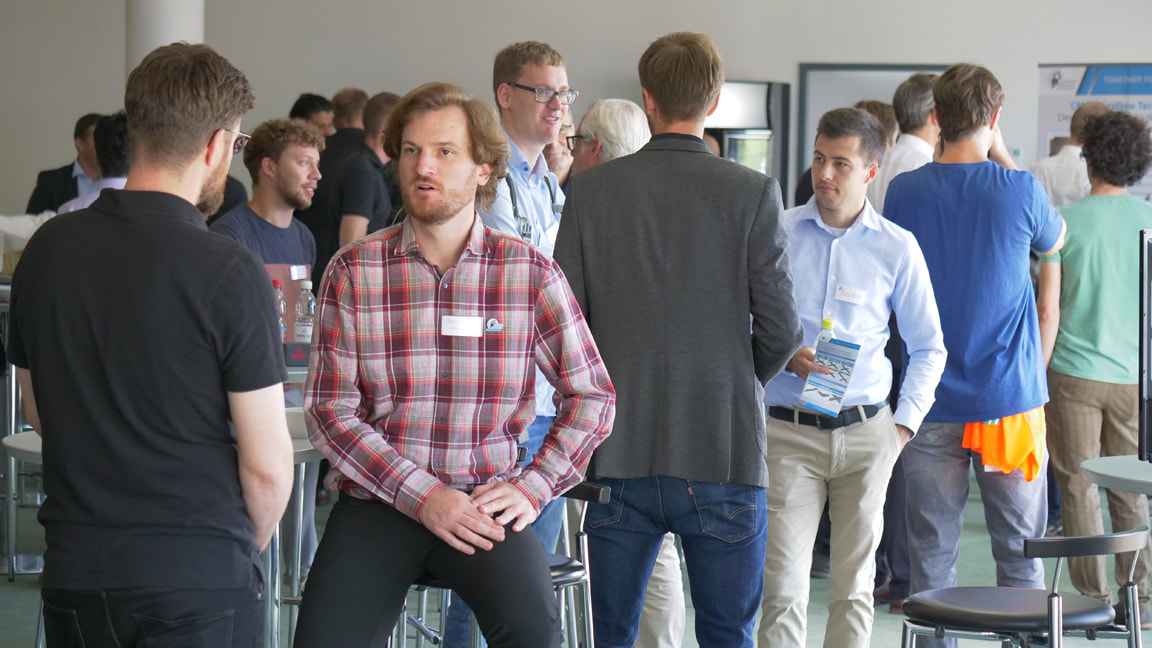
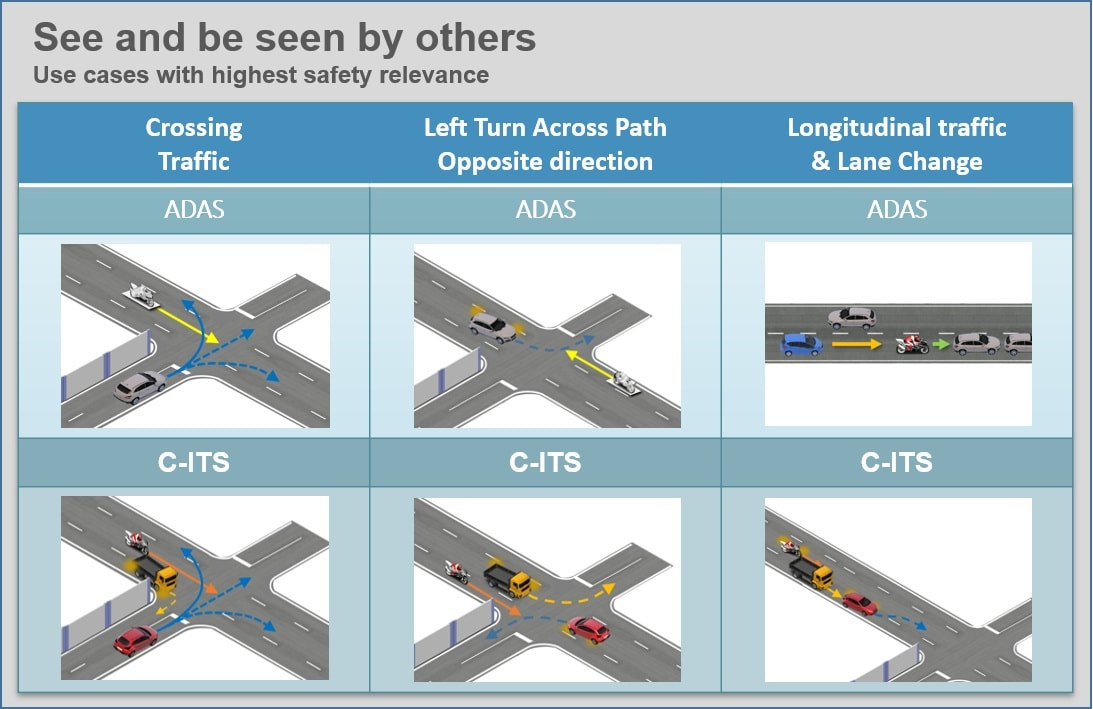
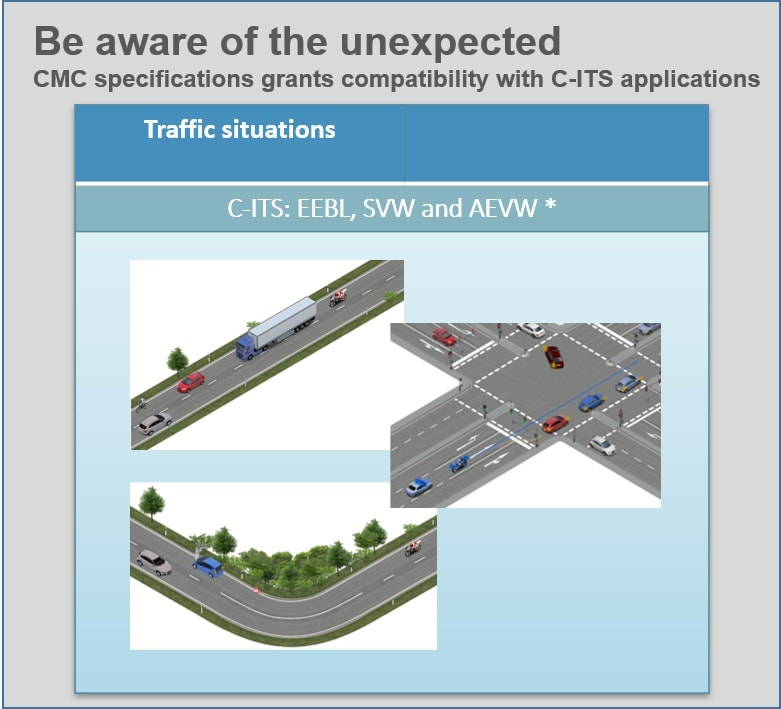
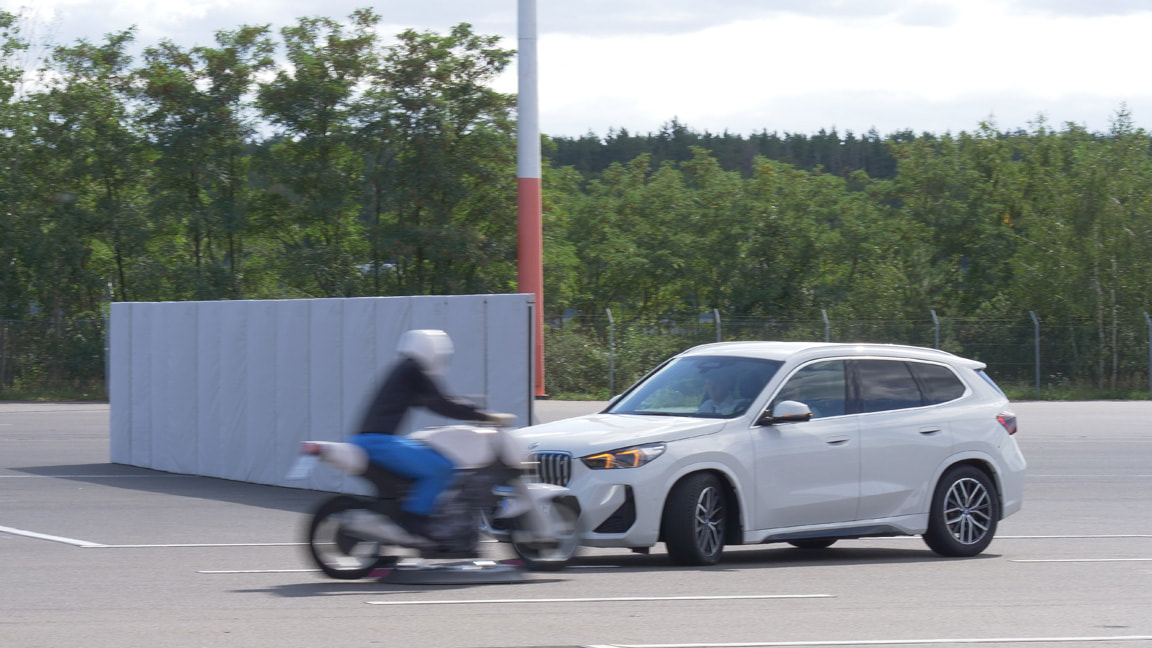
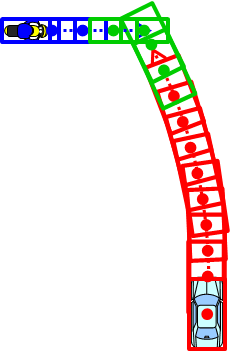
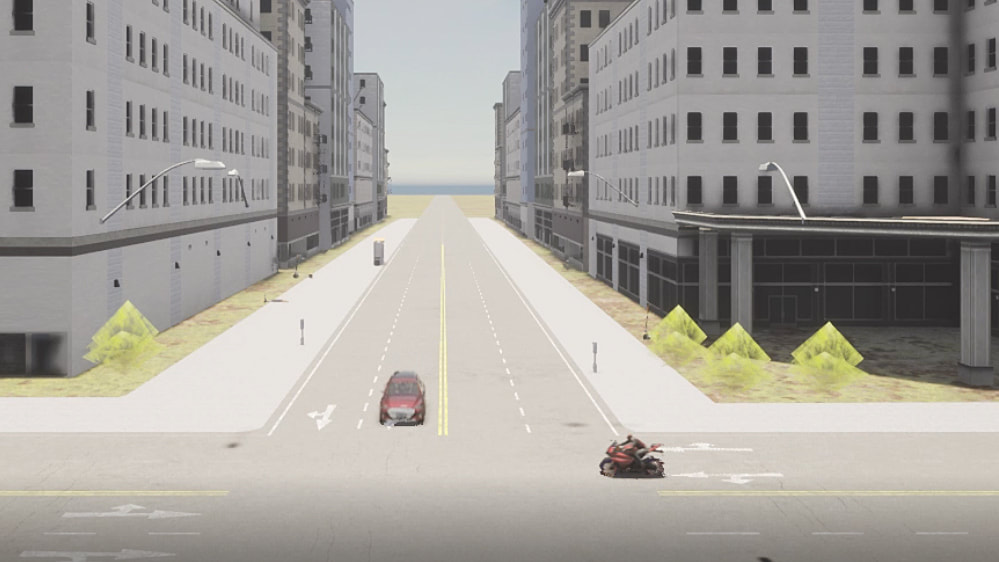
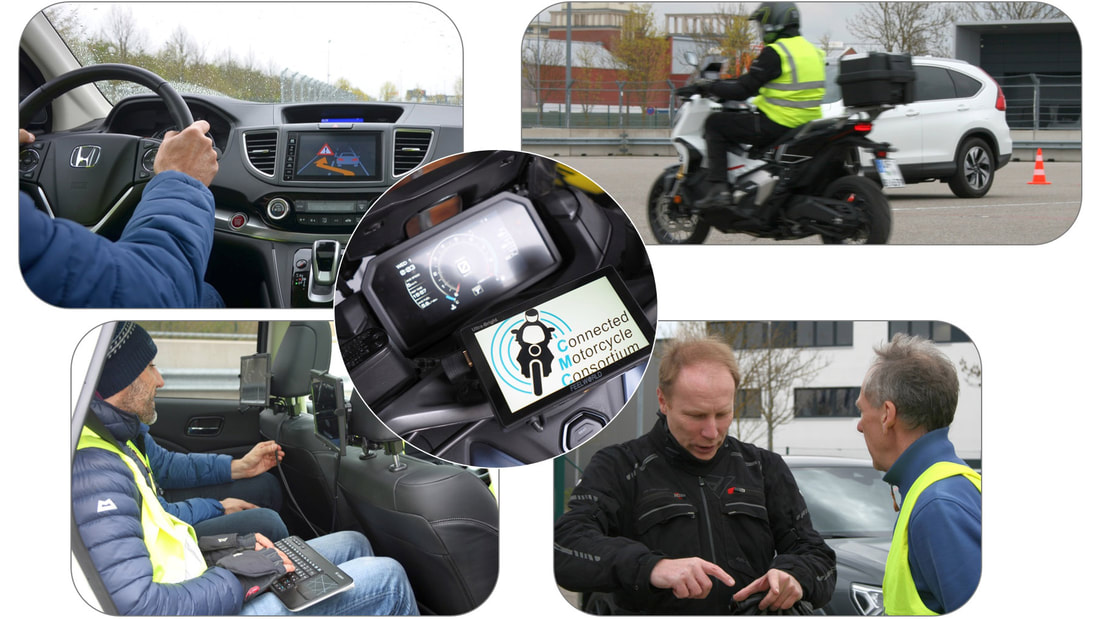



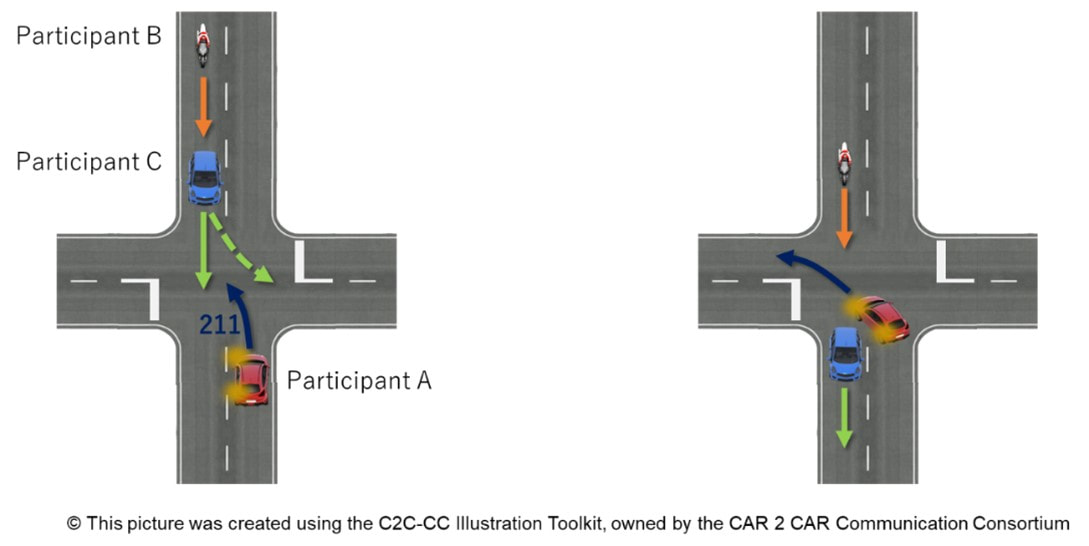
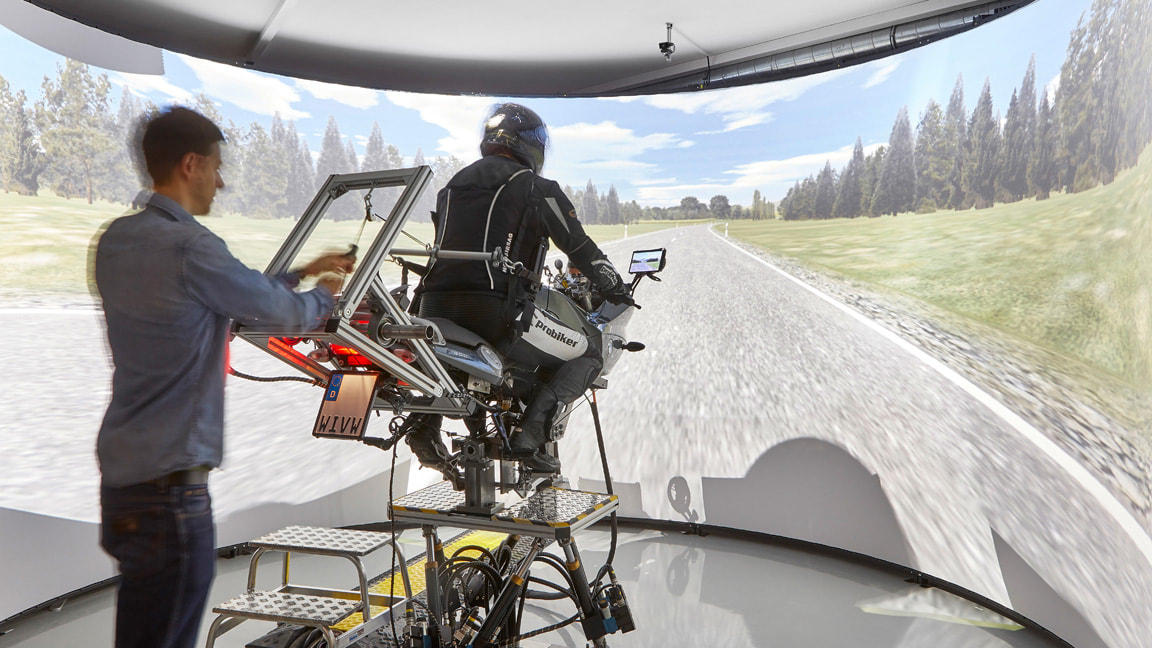
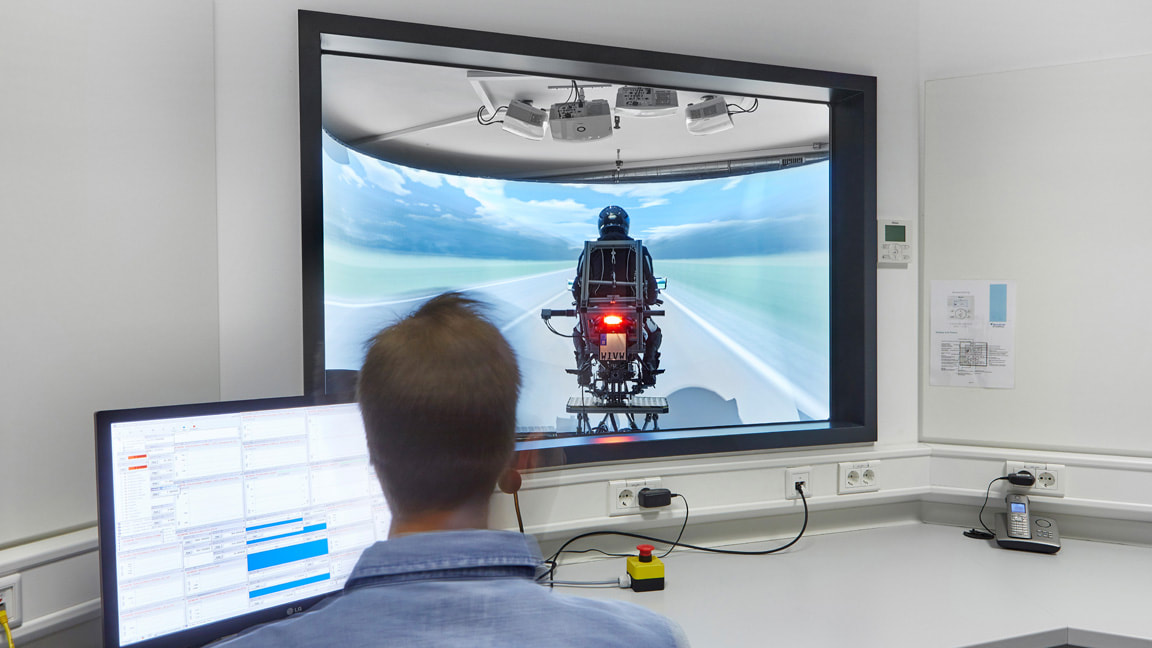
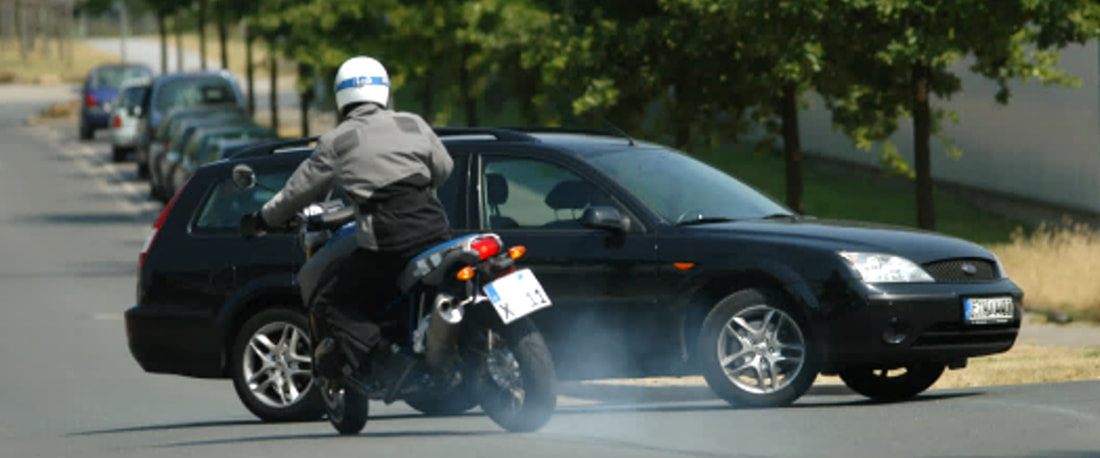
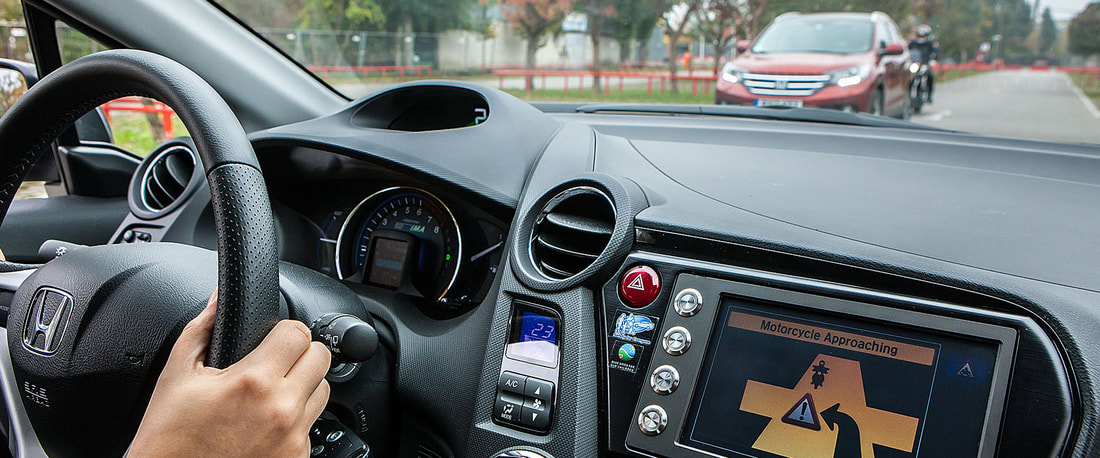
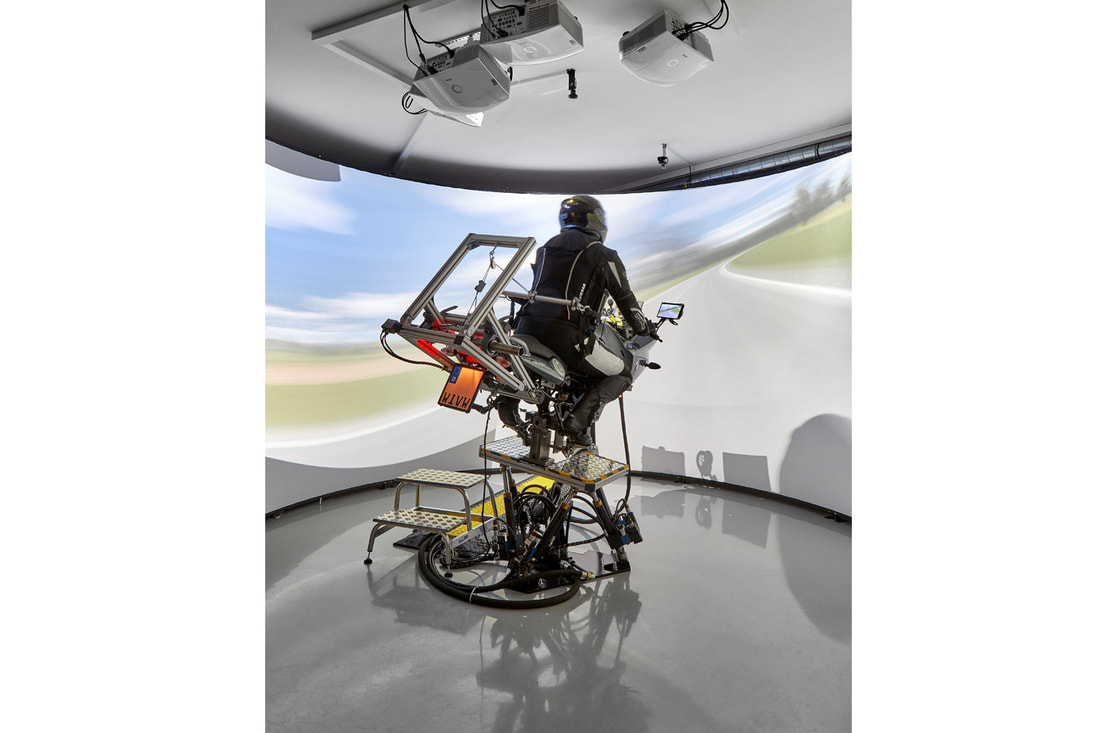
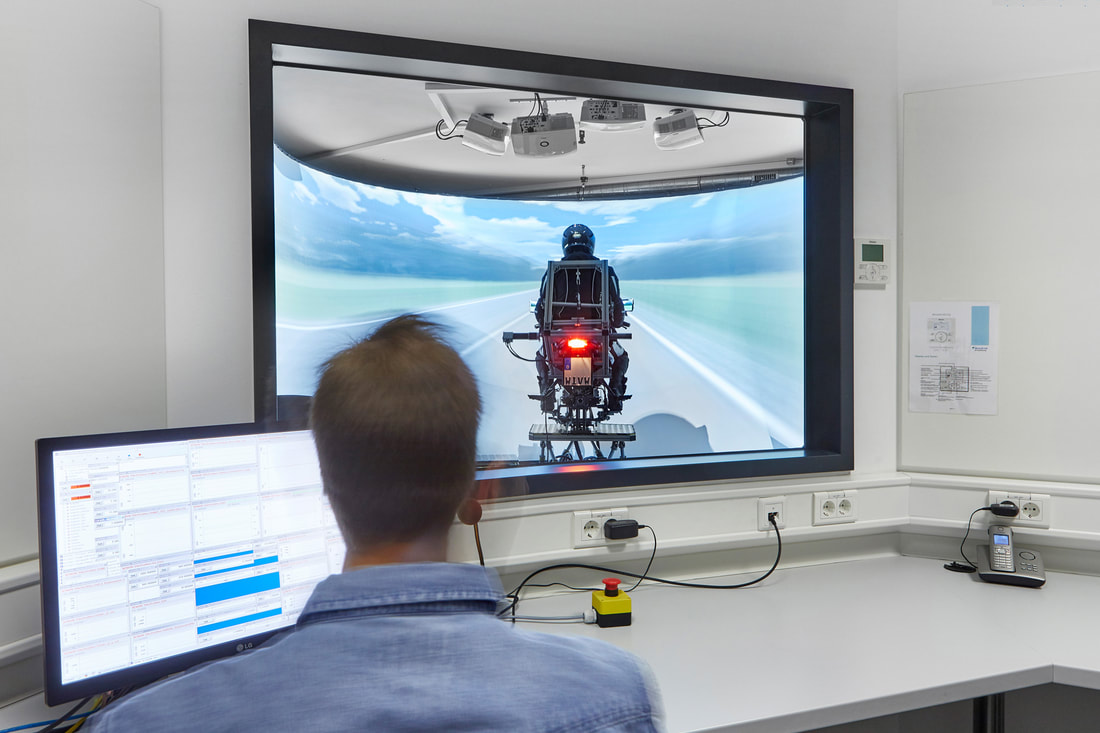


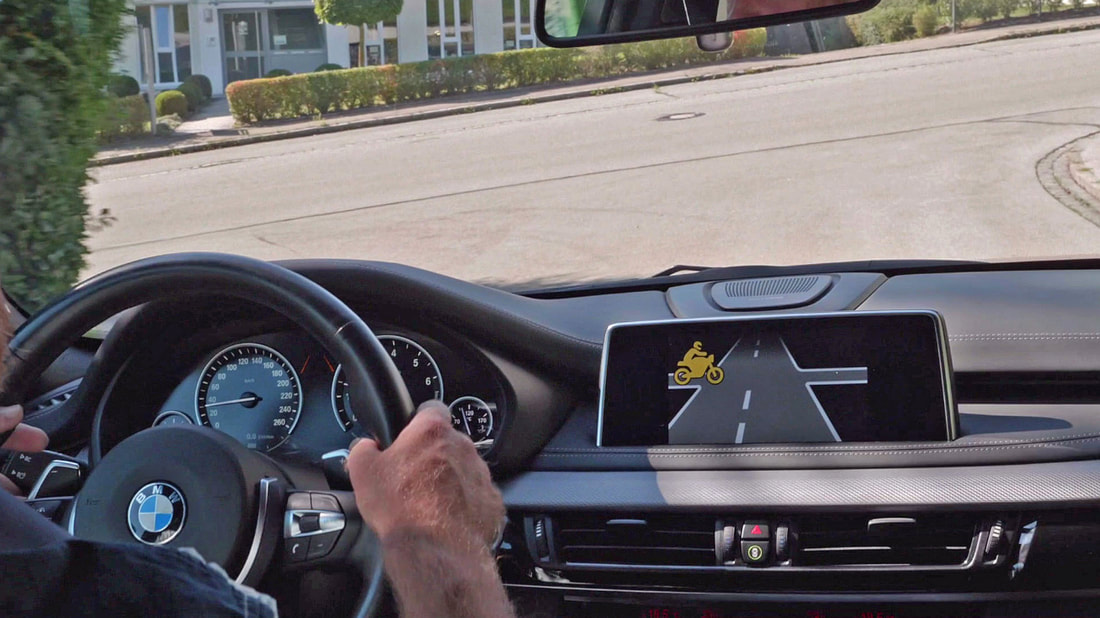
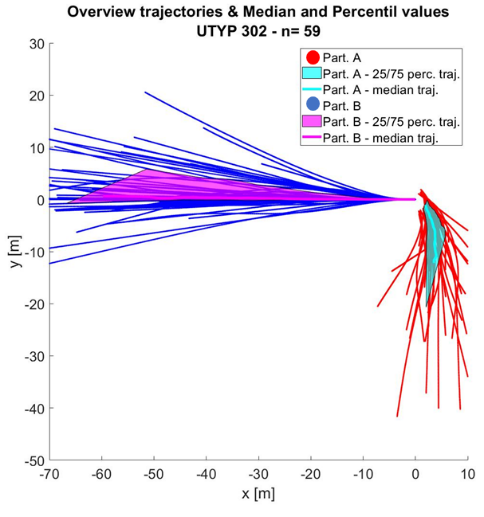
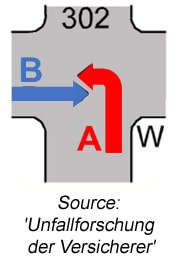
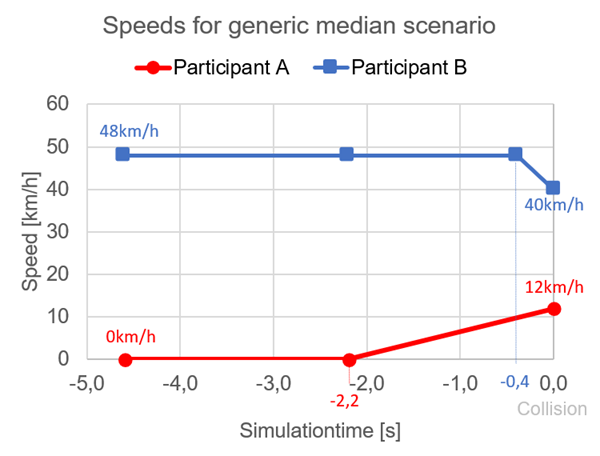
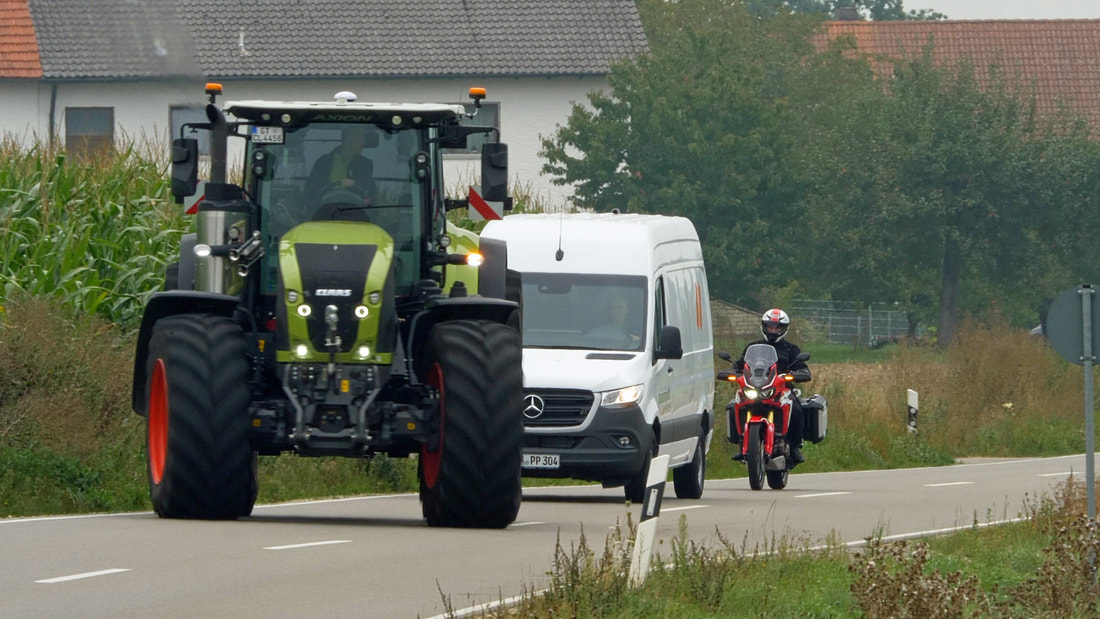
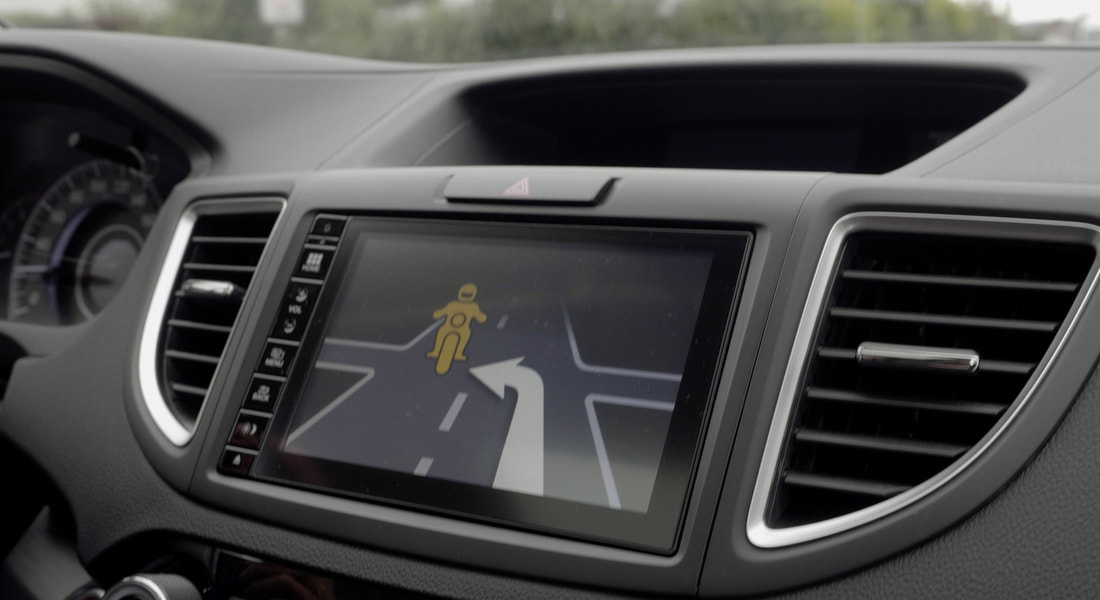
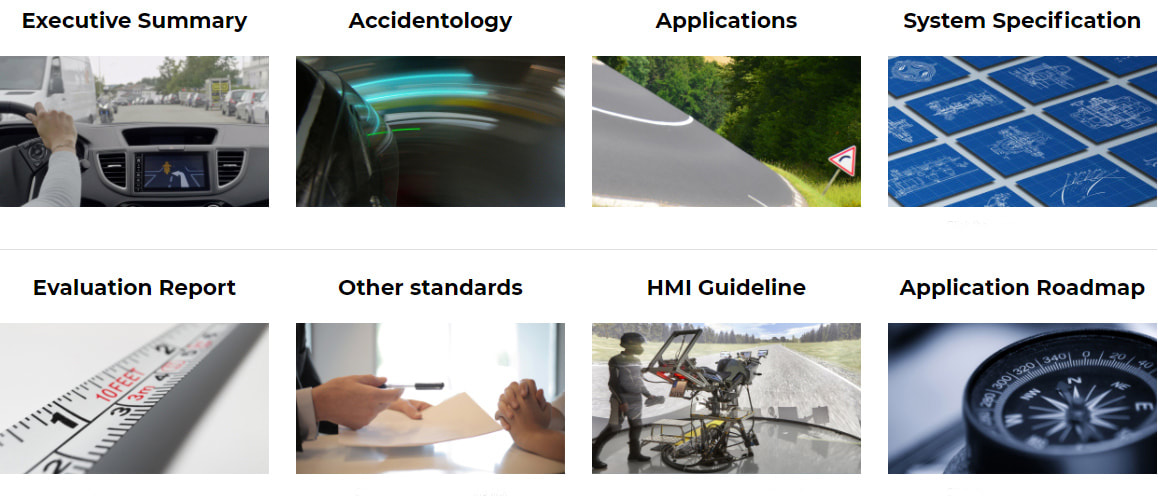
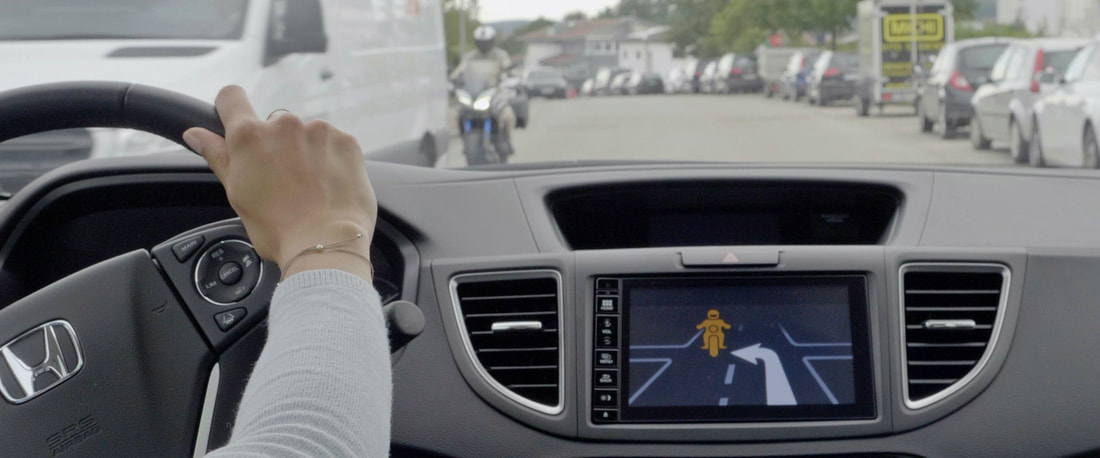
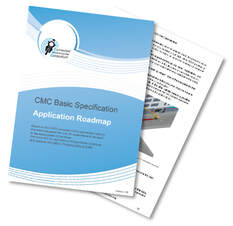
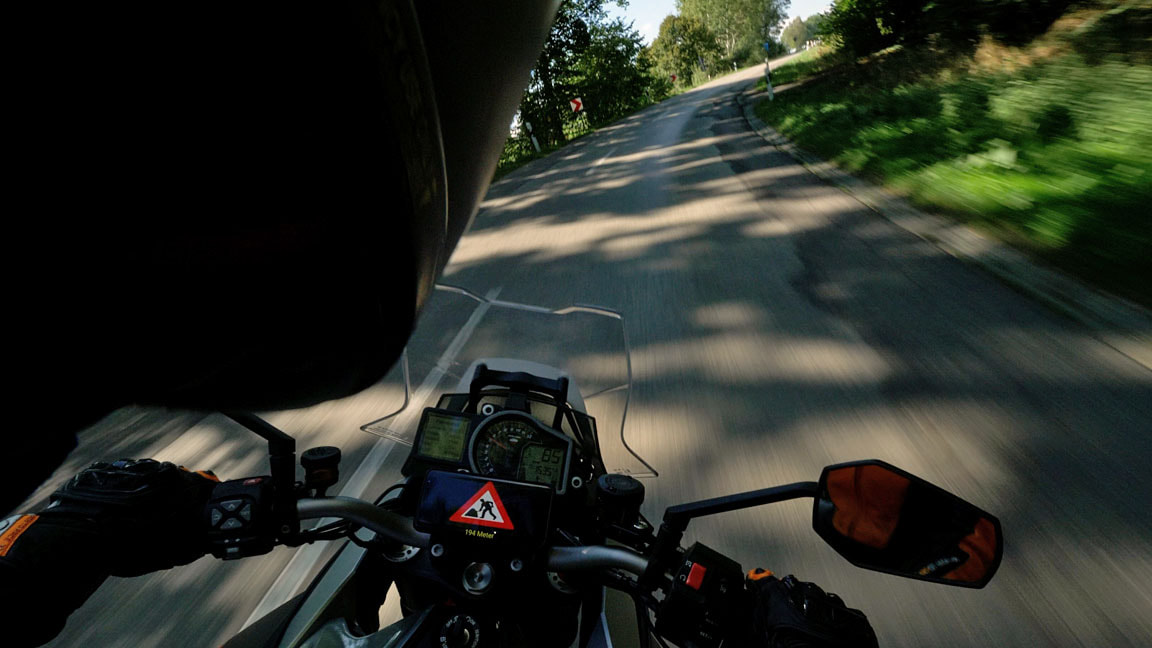

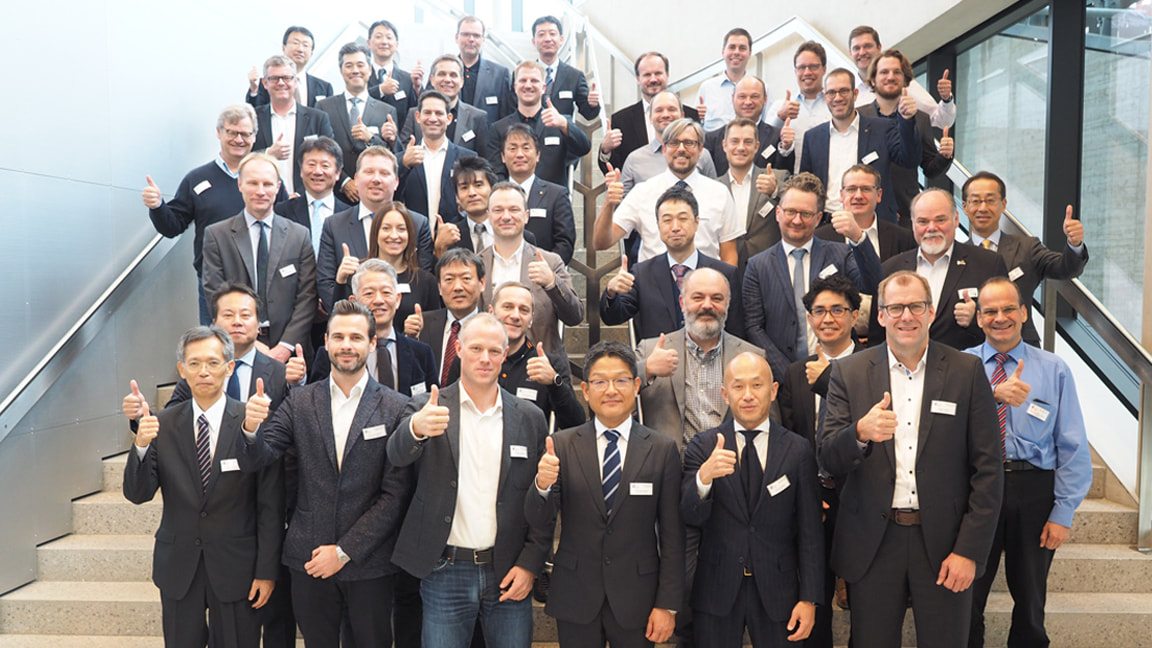
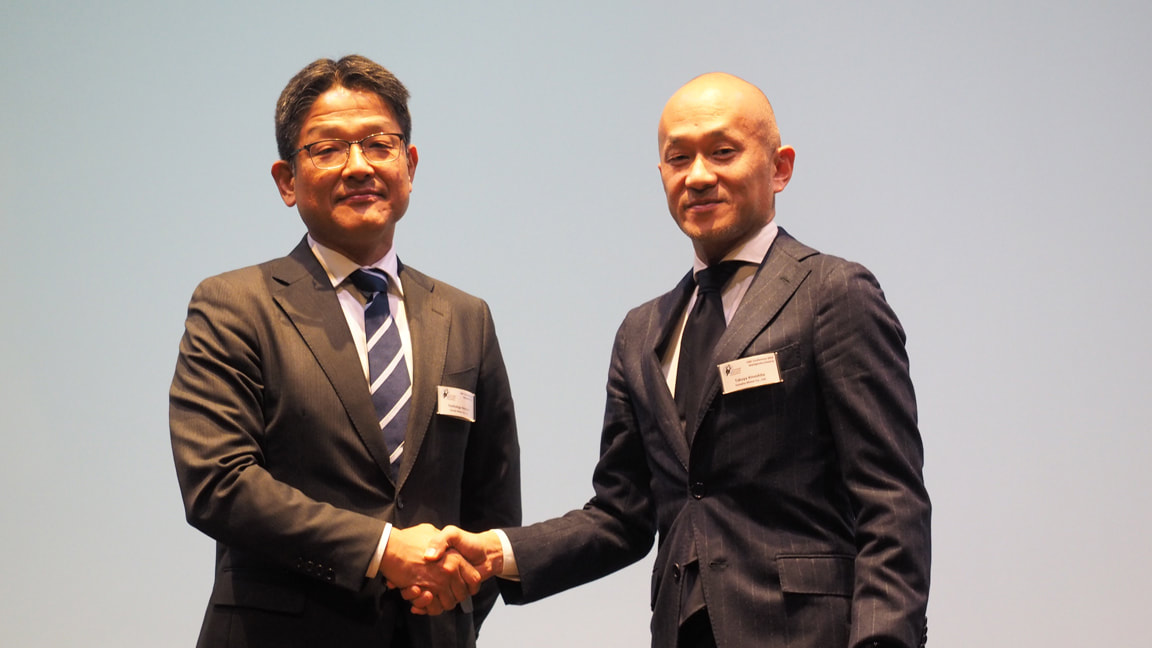
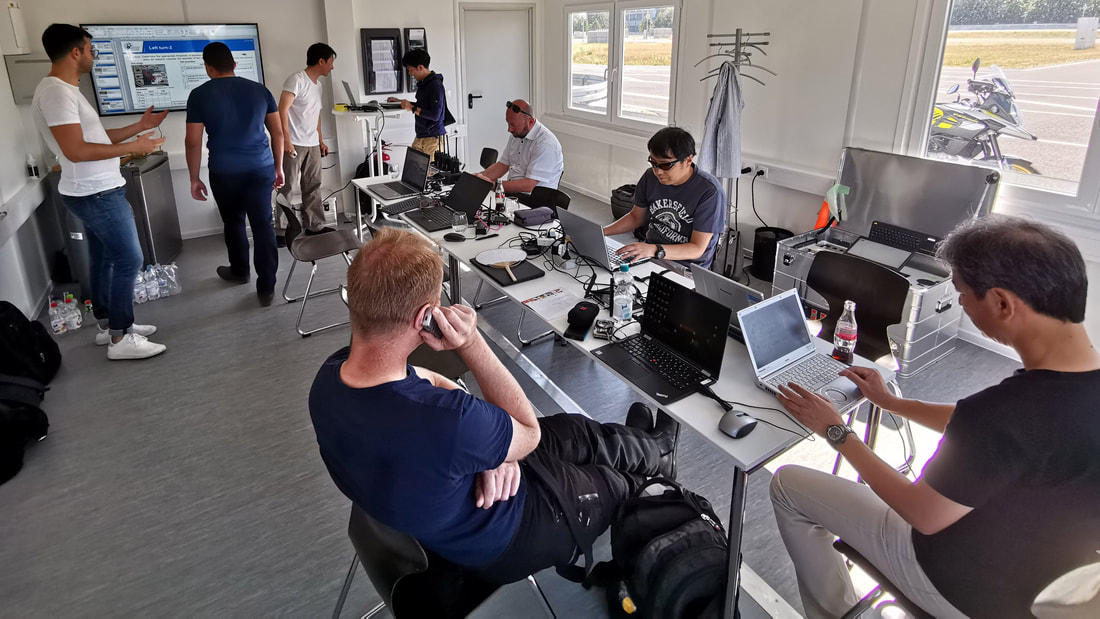

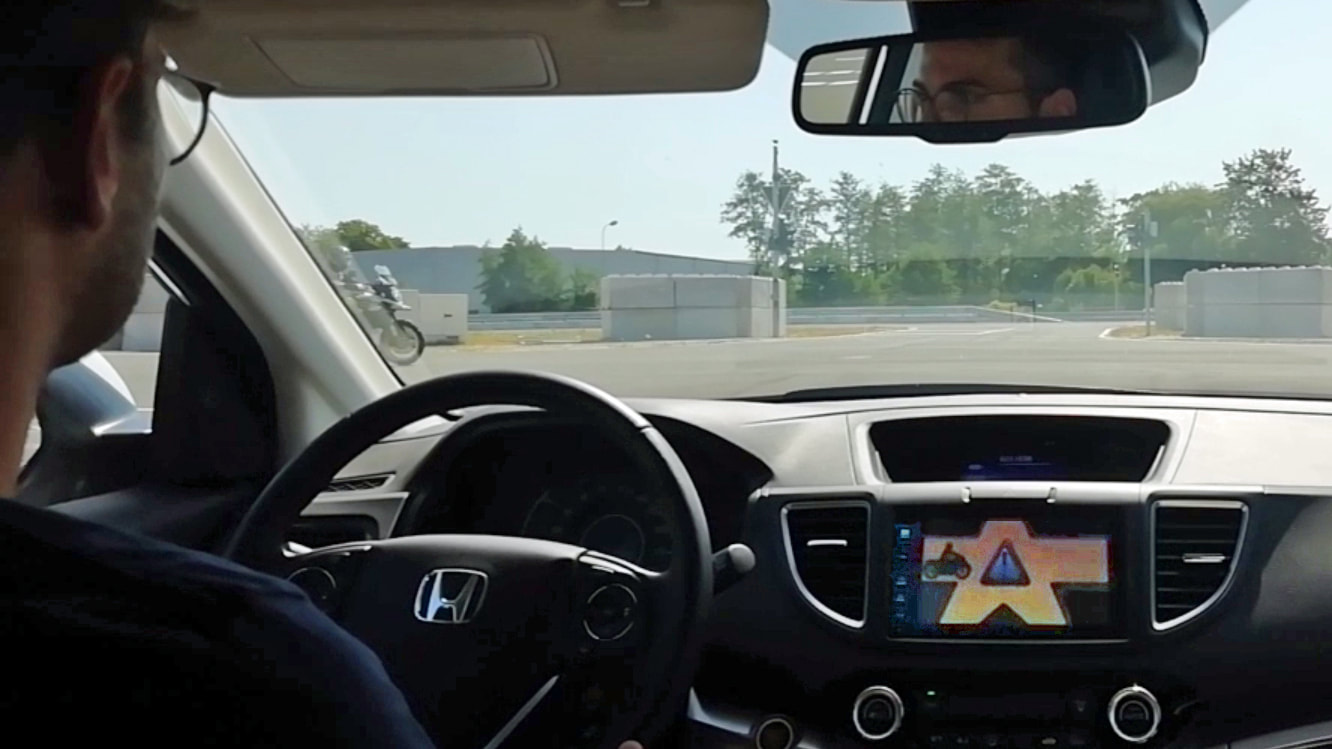
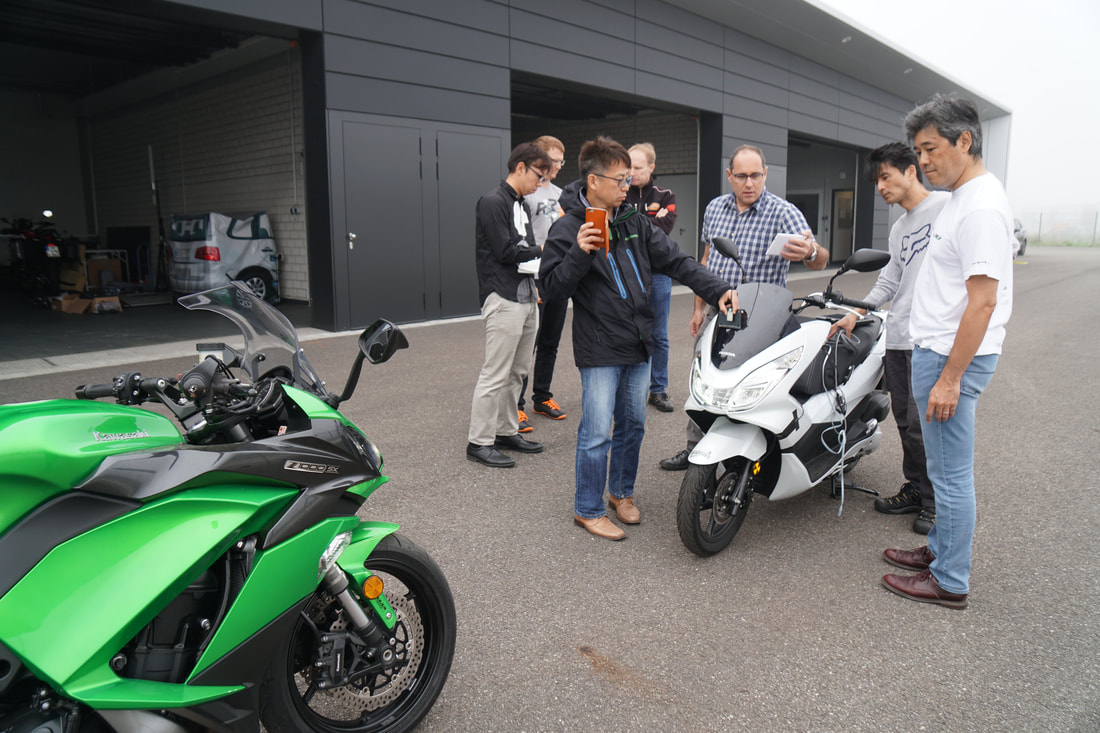
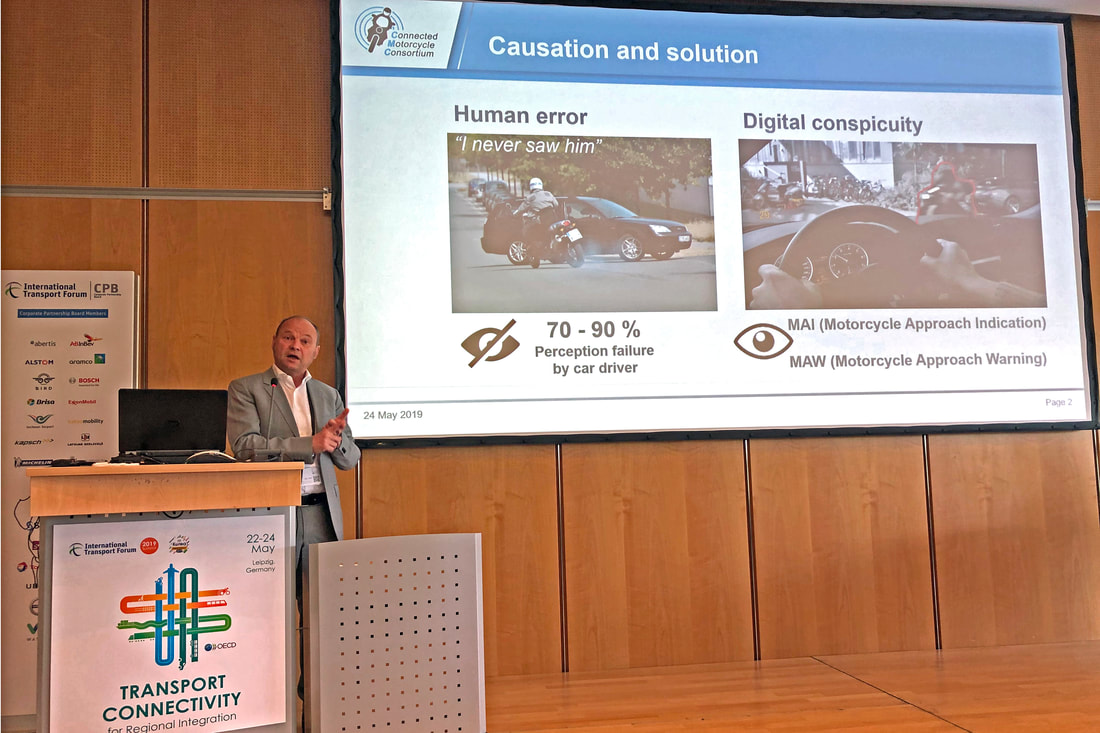
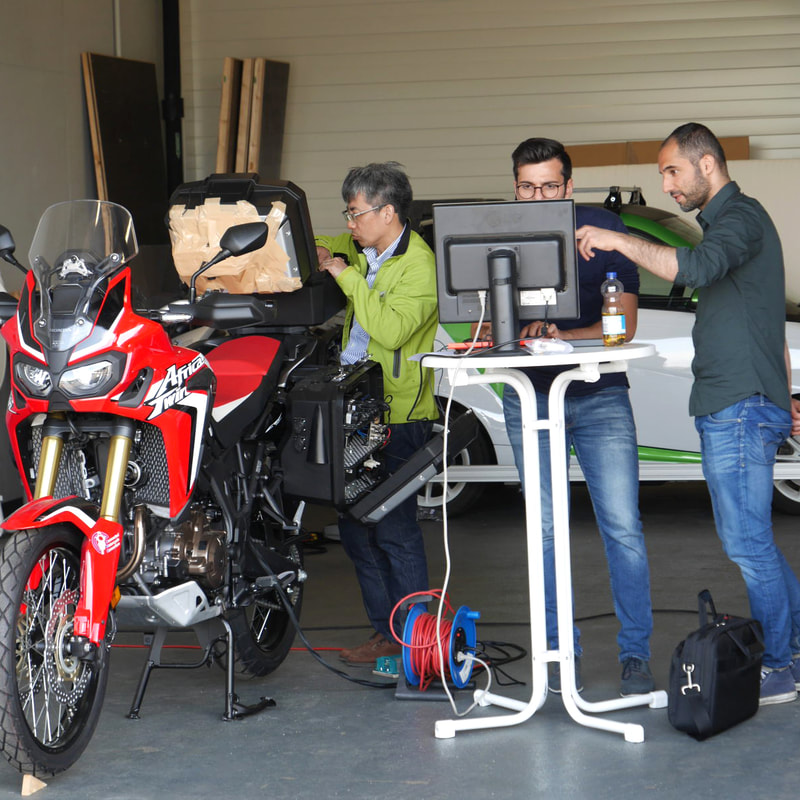
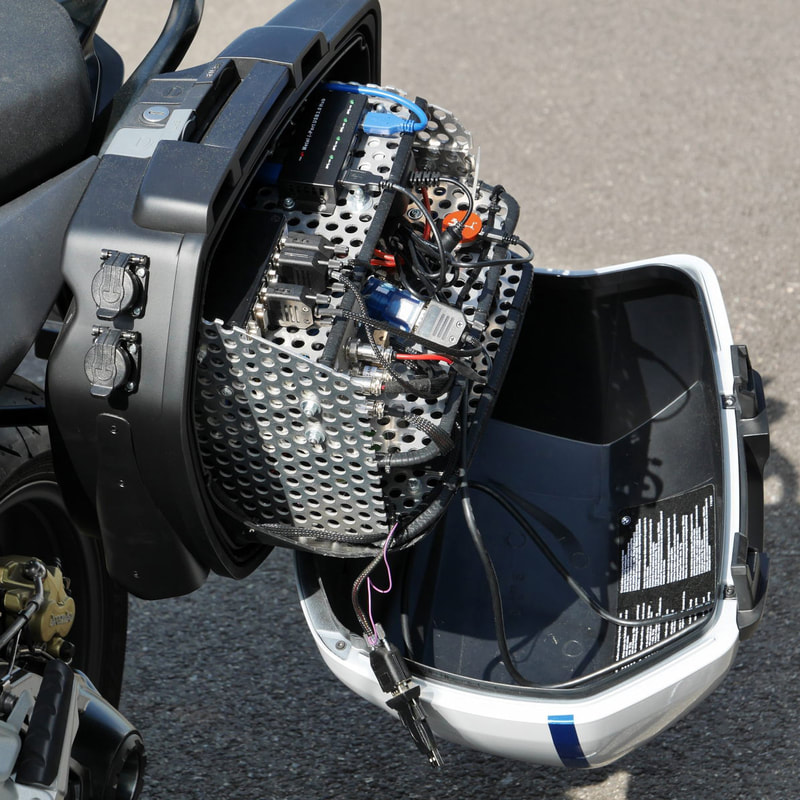
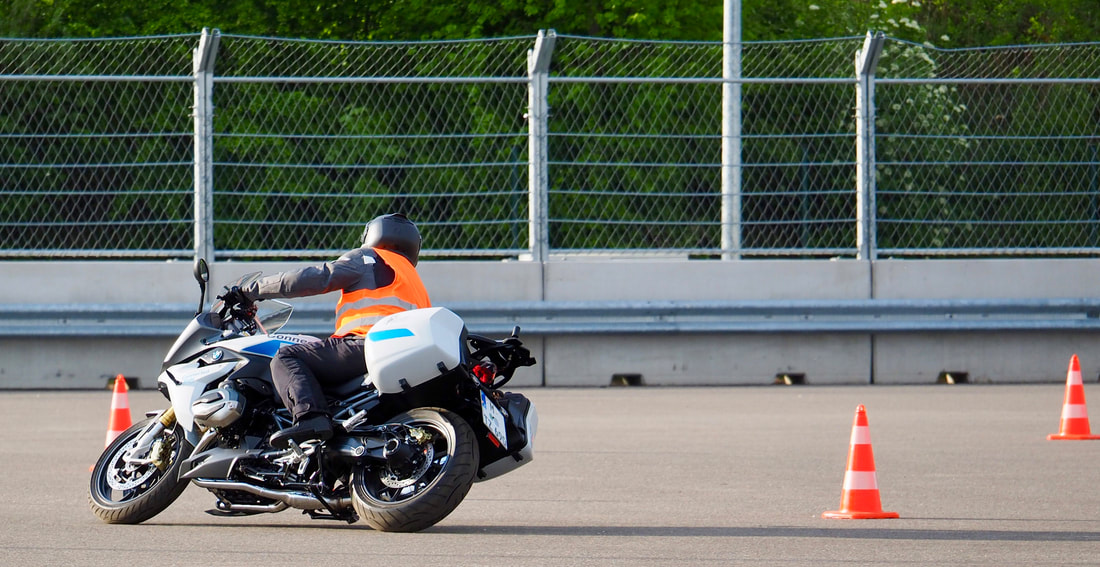
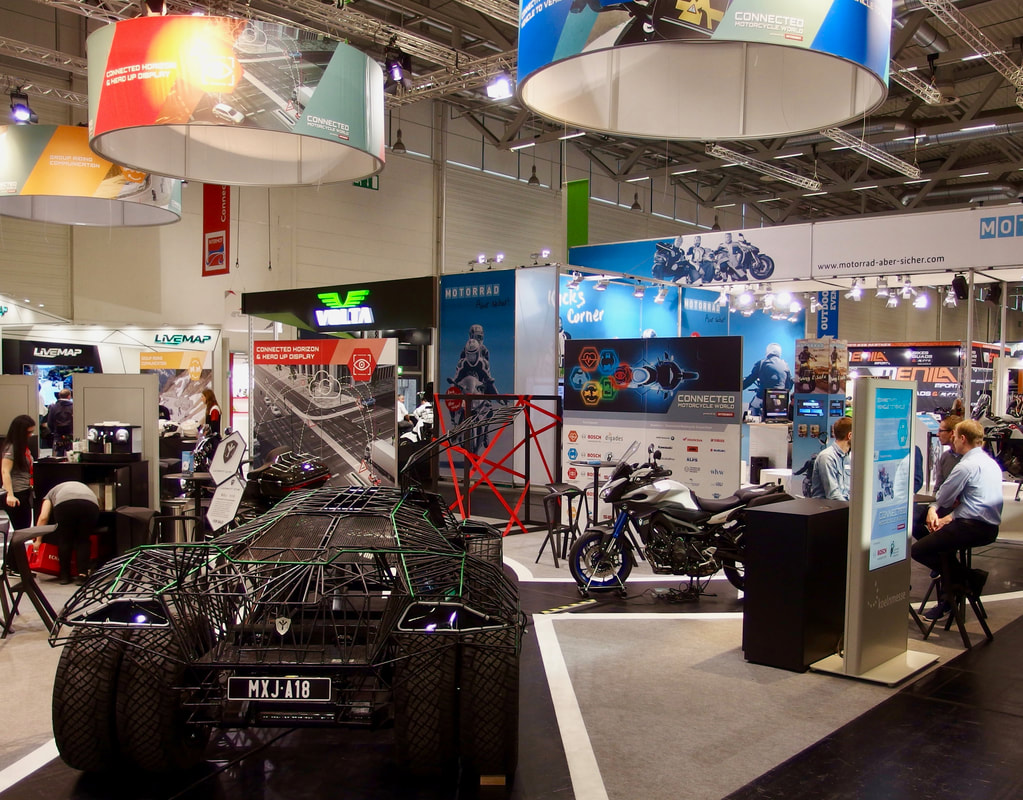
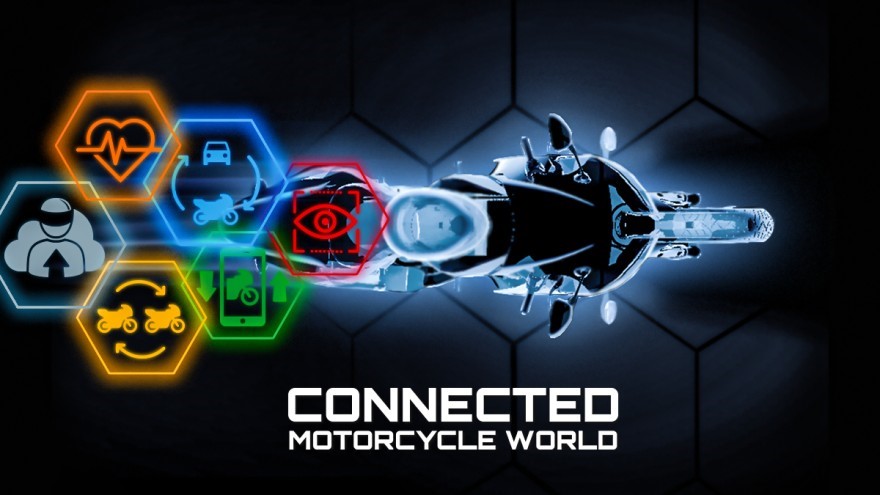
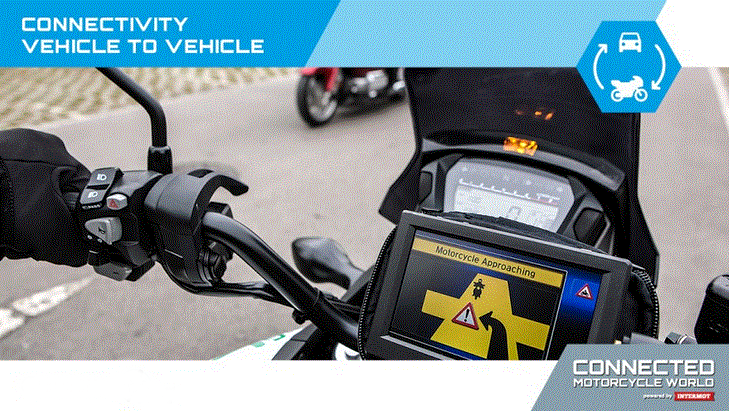
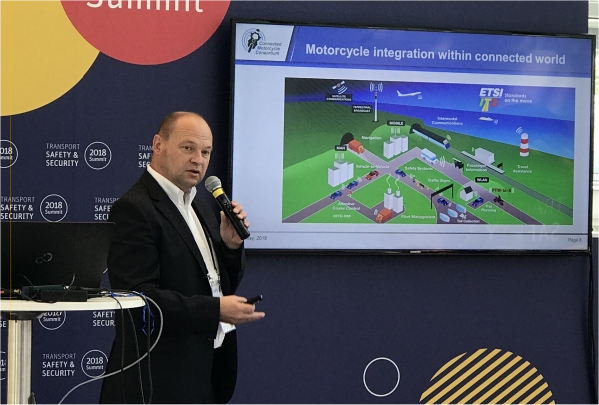
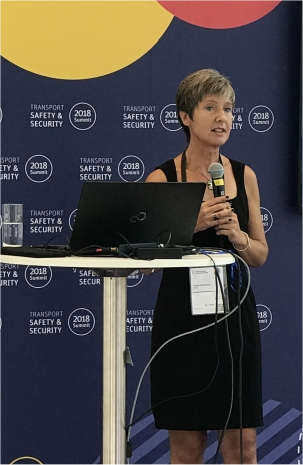
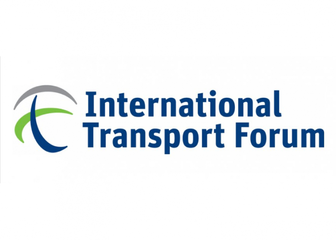
 RSS Feed
RSS Feed